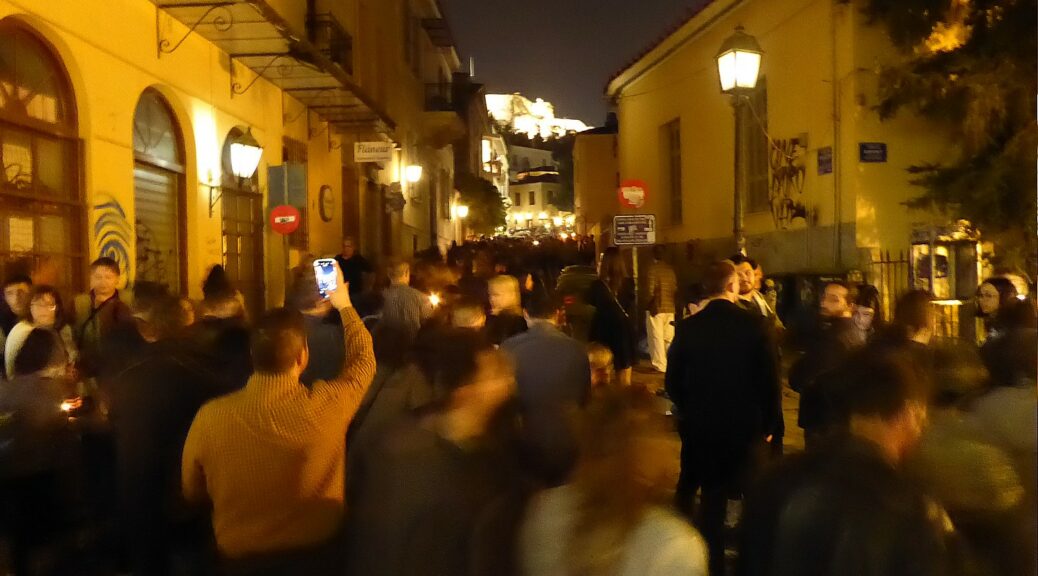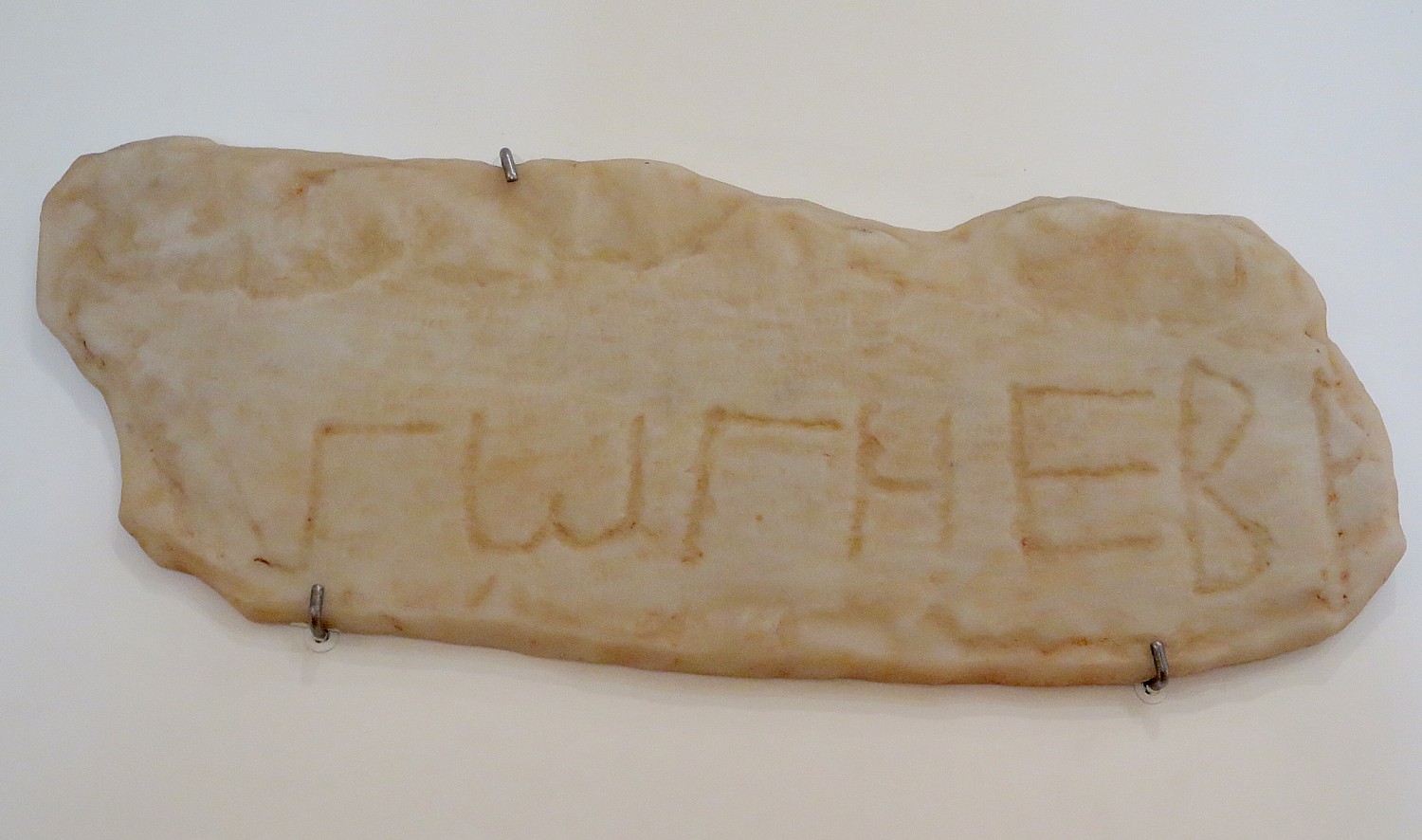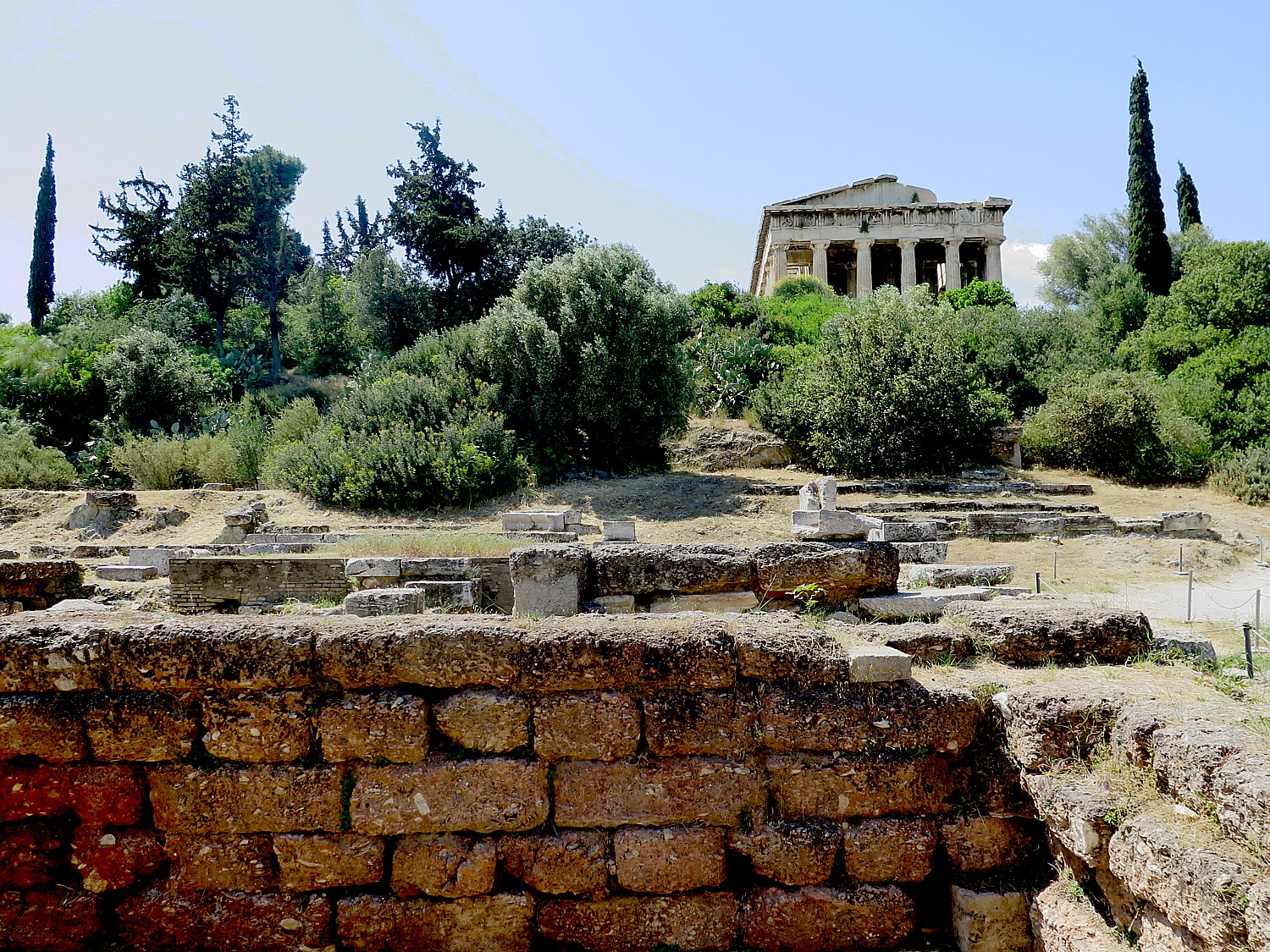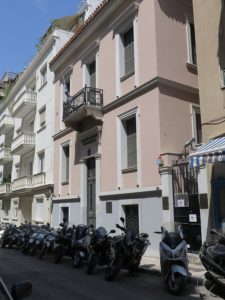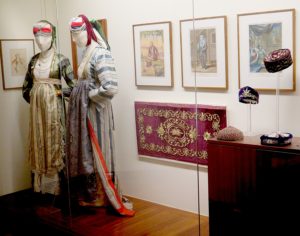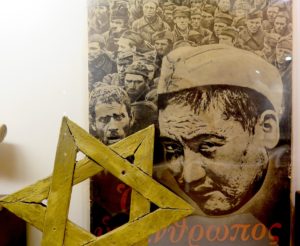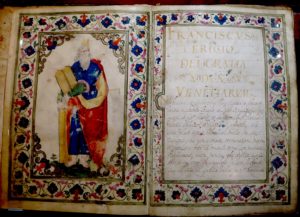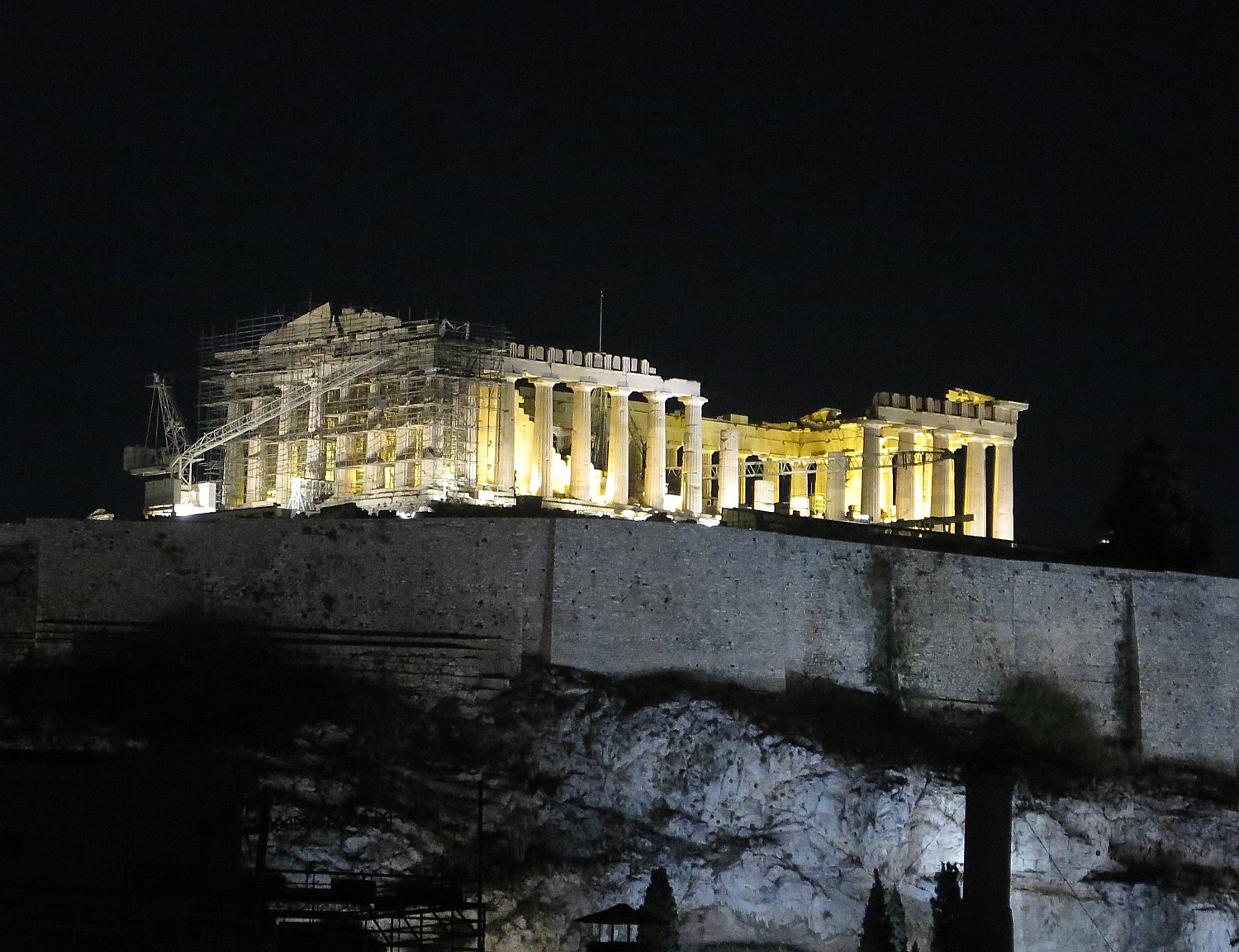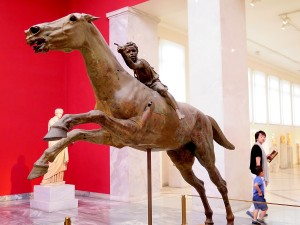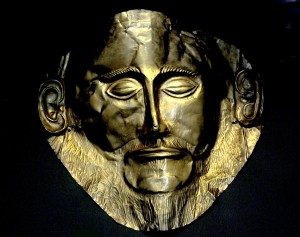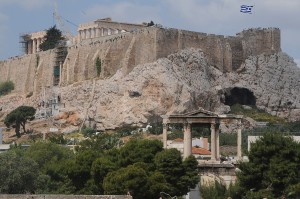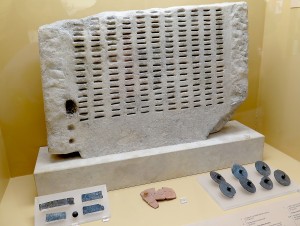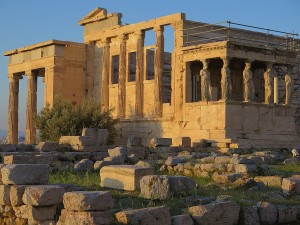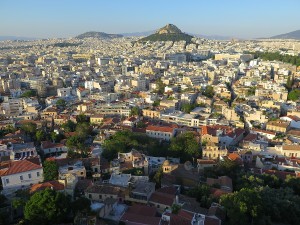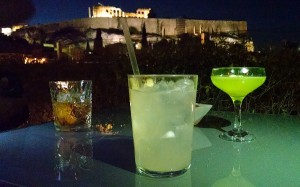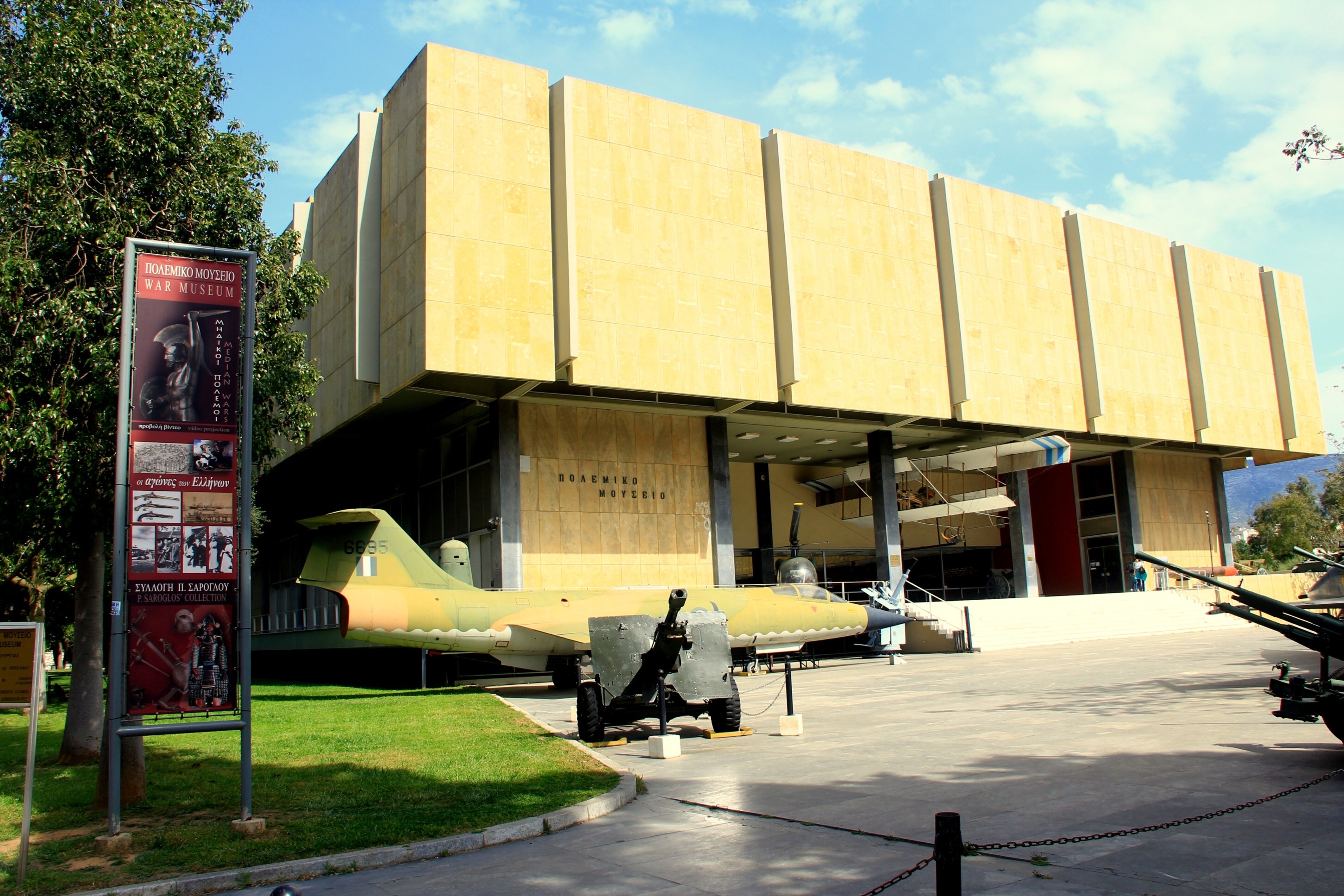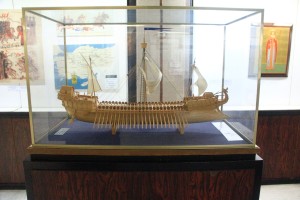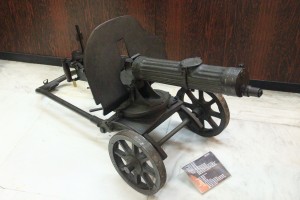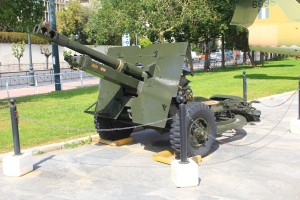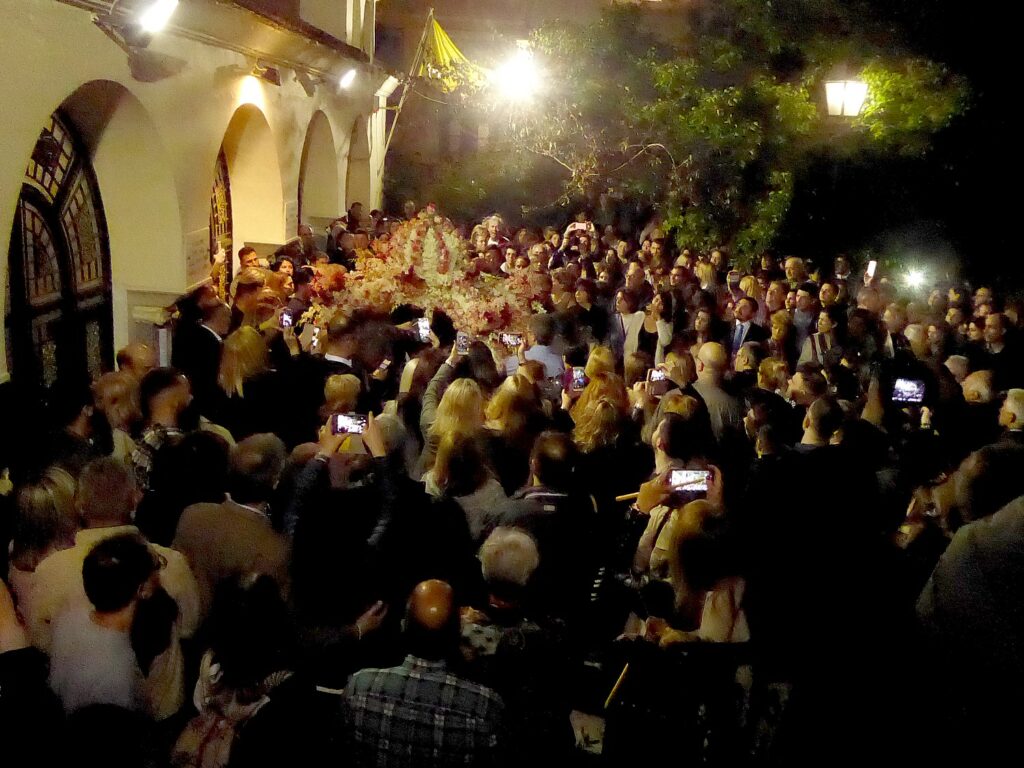
by Karen Rubin, Travel Features Syndicate, goingplacesfarandnear.com
Athens is a relatively easy Par 2 on the Global Scavenger Hunt, now midway through the 23-day around-the-world mystery tour. We have just 30 hours here, but our visit will largely be shaped by the celebration of the Greek Orthodox Easter (we seem to be hitting all the destinations on a religious holiday). We arrive on the Greek Orthodox Good Friday and one of the challenges is to experience the distinctive celebration. It’s hard to miss. Every church has a similar ritual. I walk down from the Grand Hyatt Hotel where we have arrived in the midday, to the Plaka, stopping to reflect on Hadrian’s Arch before I take the narrow street that leads me to the 11th century Byzantine church, where devotees are coming.

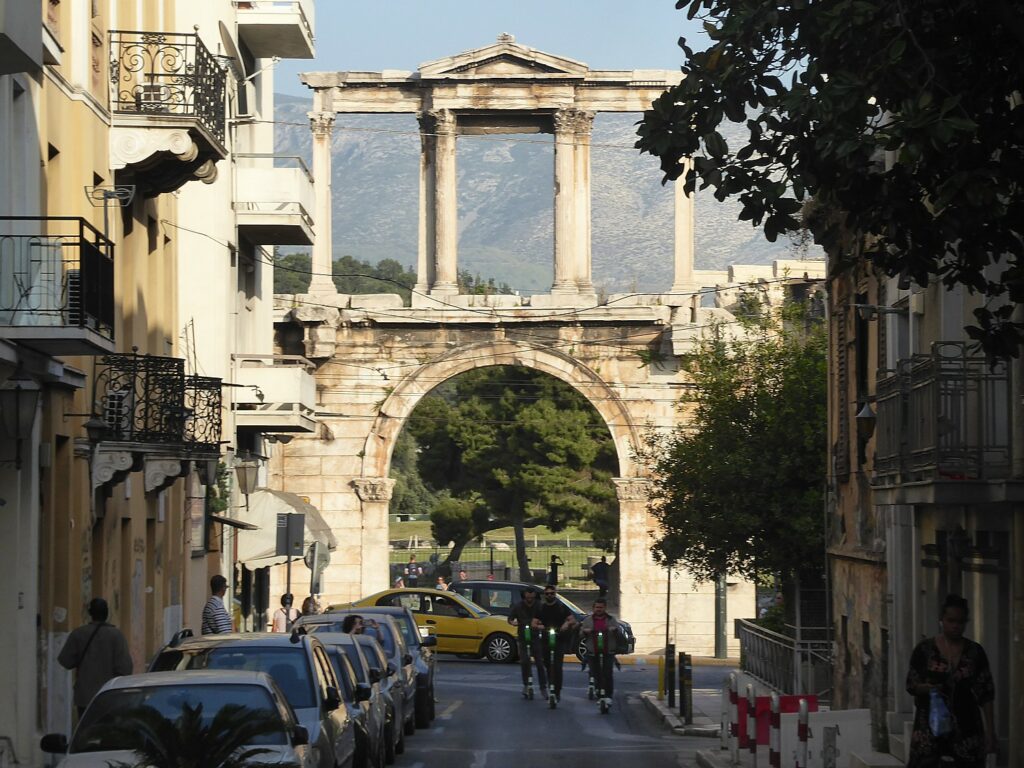
It is particularly interesting, since so far on the Global Scavenger Hunt we have been immersed in Buddhist culture, then Islamic. Athens is Christian, but it is also the birthplace of democracy and Western Civilization, as it is known, and the entranceway to Europe.
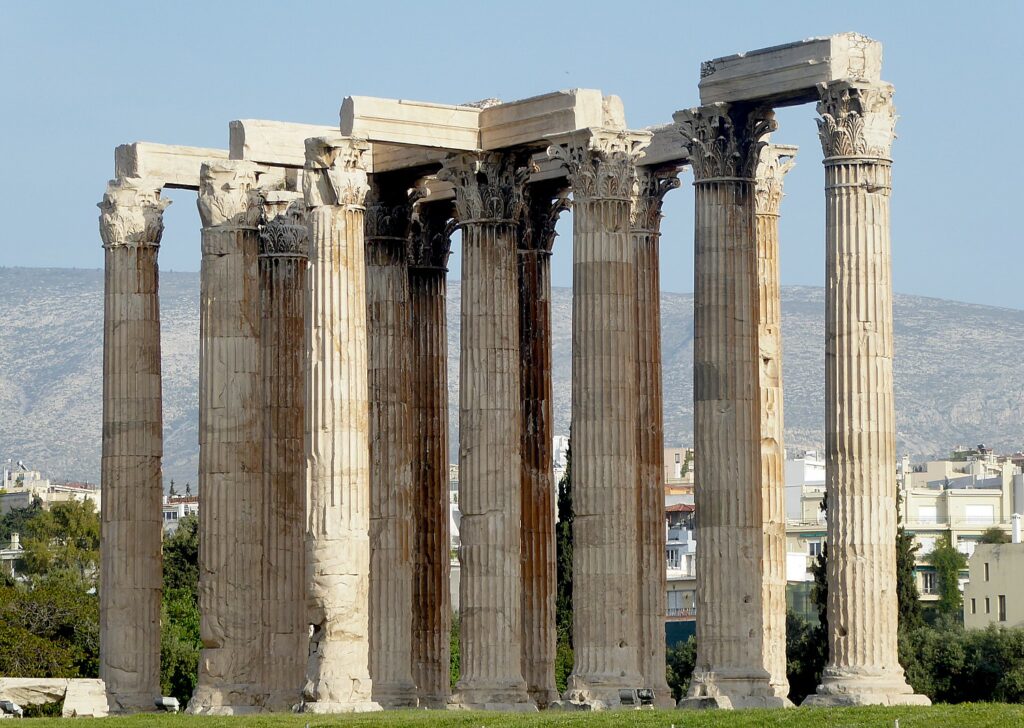
I feel very at ease, very comfortable here – partly because this is my third time in Athens and I have spent a relatively lot of time here, but also because it is, well, European, modern, hip, artful – even with its ongoing economic and political problems (though it seems to me the economy has much improved since my last visit).
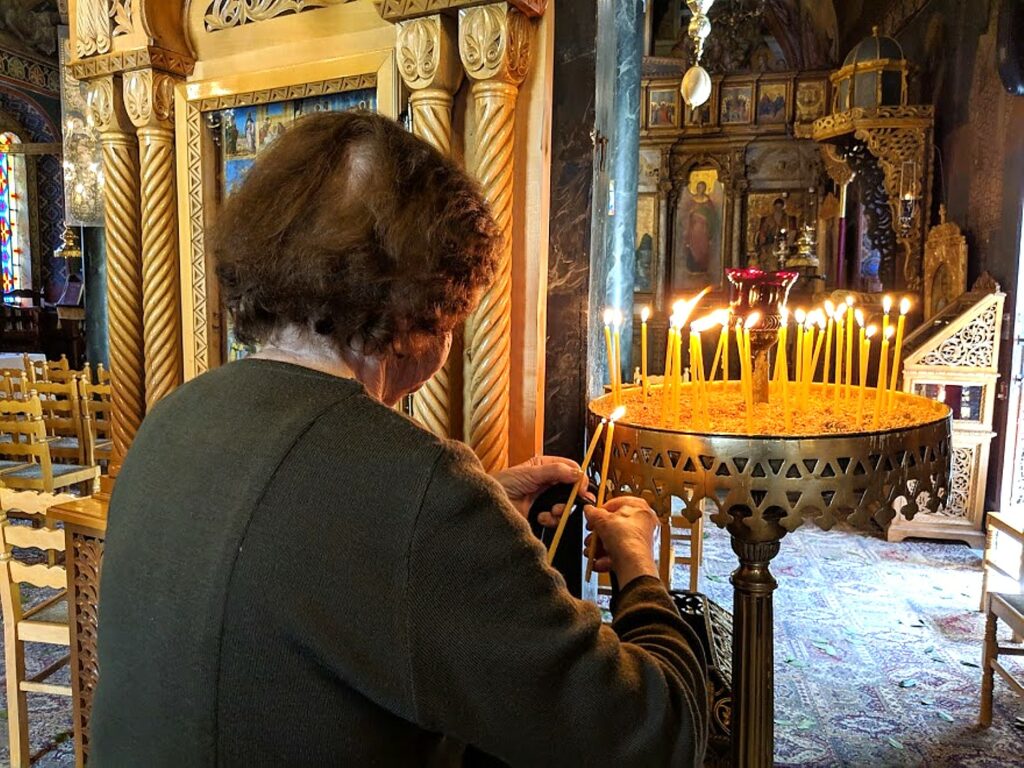
As I am waiting and watching, another of our GSH teams, Transformed Travel Goddesses (aptly named in Athens), comes up the street and we watch together. It turns out to be quite a long wait. I had been told that at 7 pm, the priest comes out and the faithful ring the church. The service is underway at 7 pm that we can hear from outside; the crowds really thicken but it isn’t until 9 pm that the priest comes out, leading a procession. People light candles and follow the procession of the cross and funerary flowers through the streets.
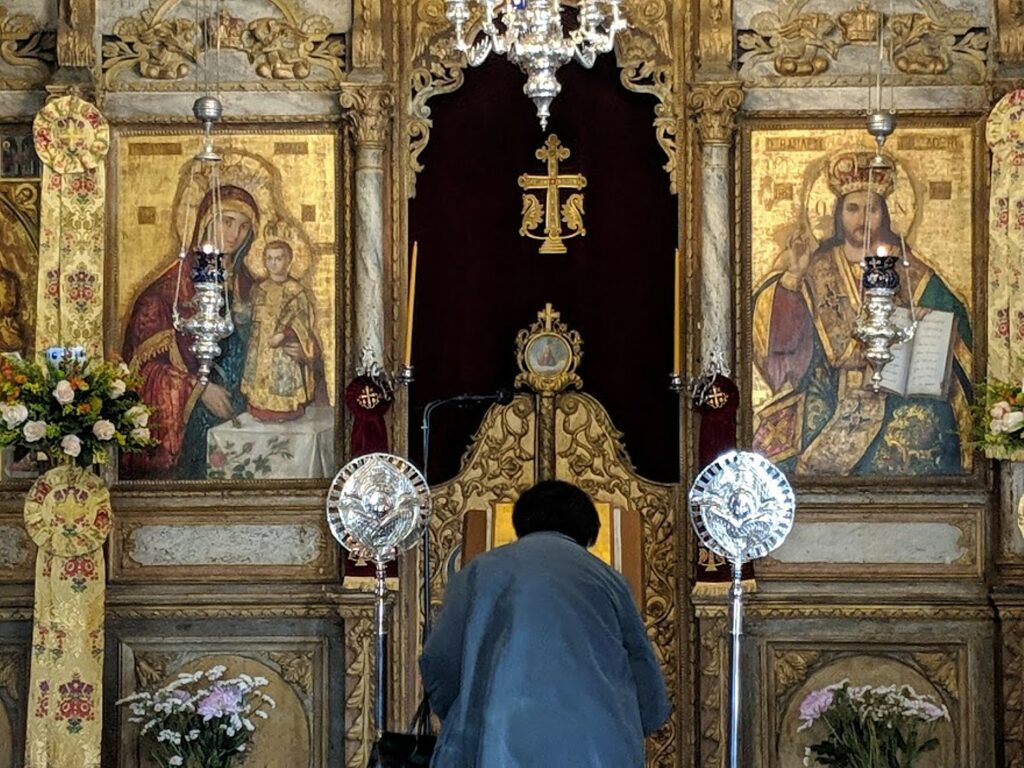
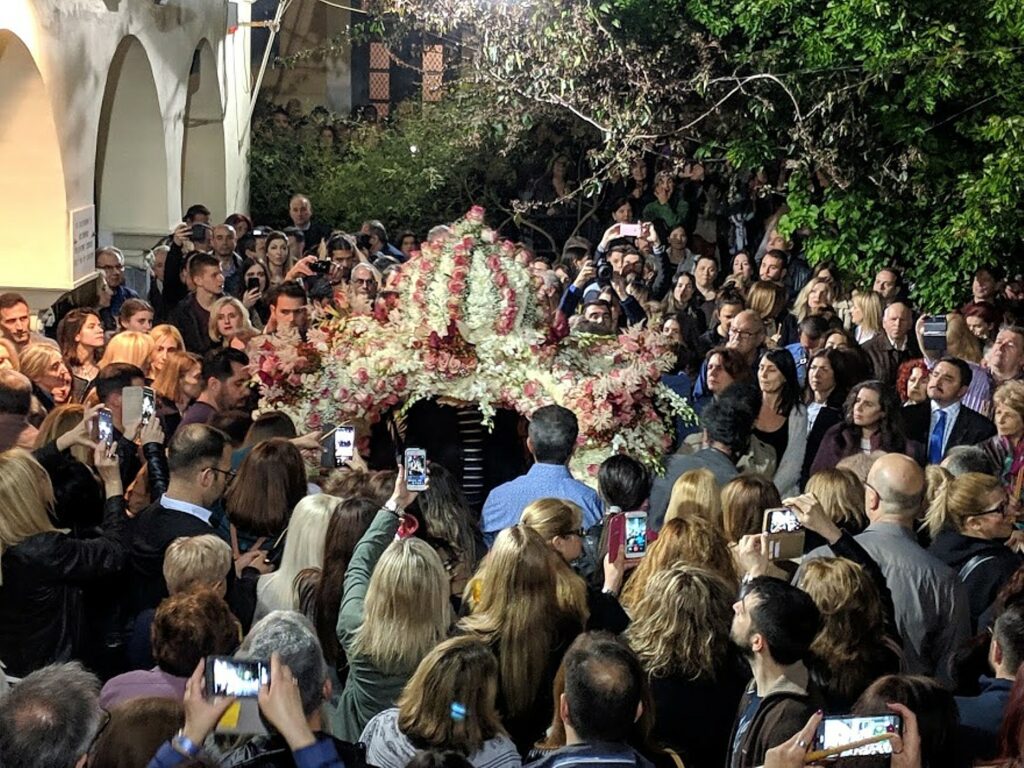
We join the crowd as they wind their way through the narrow streets below the Acropolis, and when we turn to a different direction, we meet the procession again. All the streets are flooded with similar processions – candles moving like ripples of water through the narrow streets. People jam the outdoor restaurants as well. We visit another small Byzantine church where the frescoes are absolutely stunning.


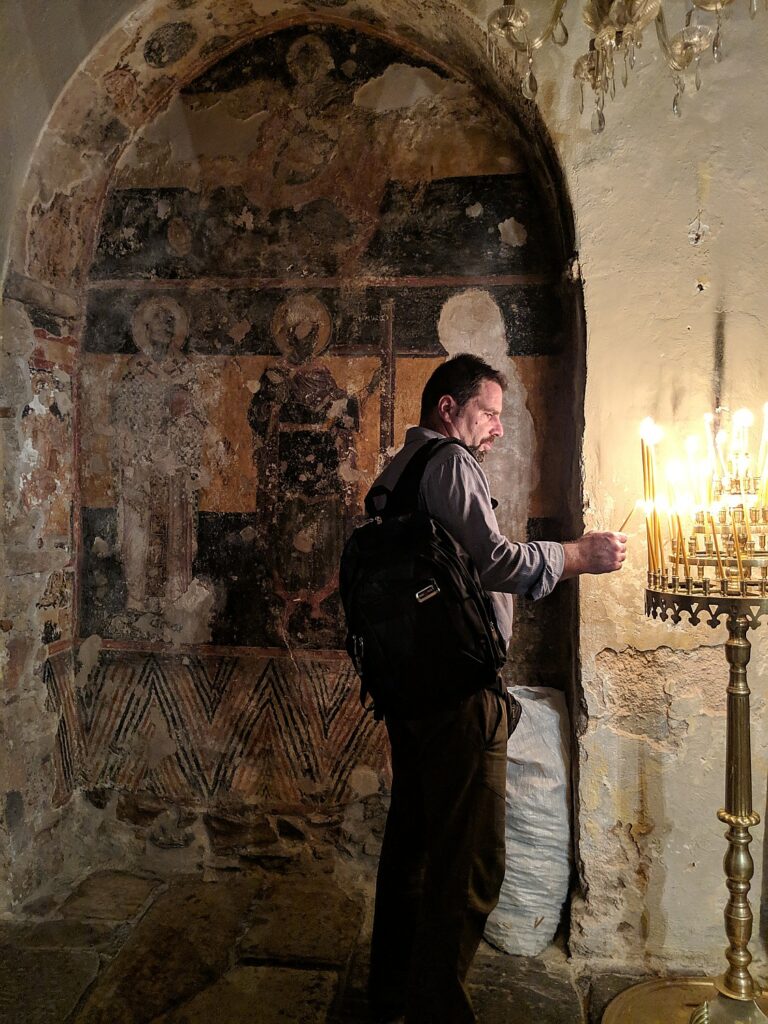

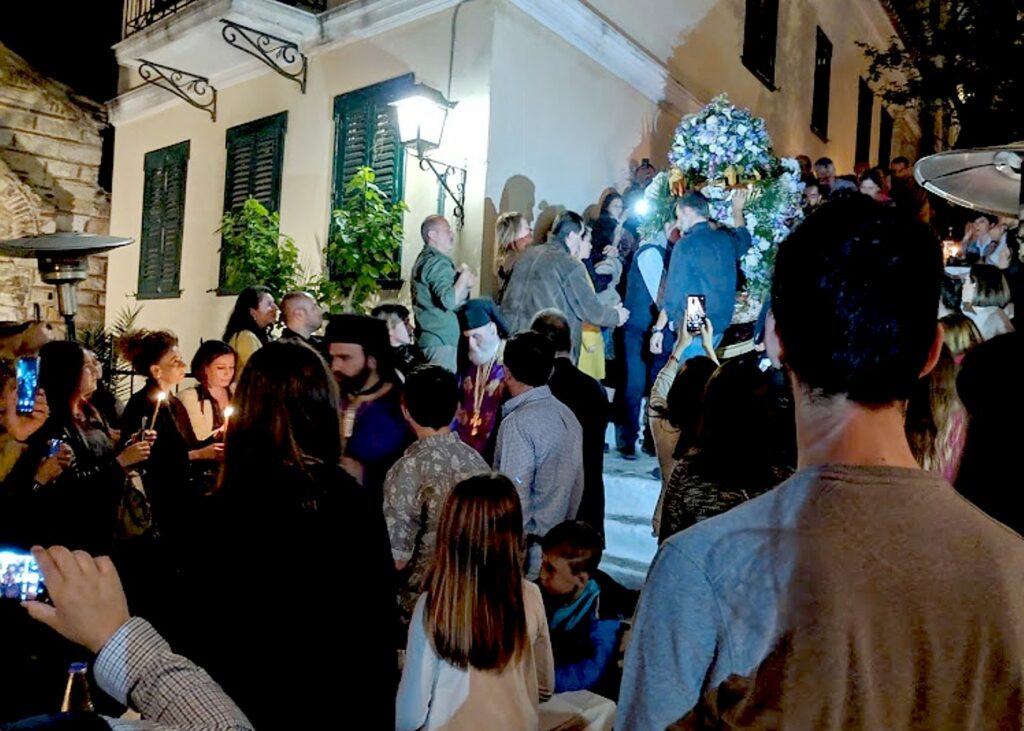
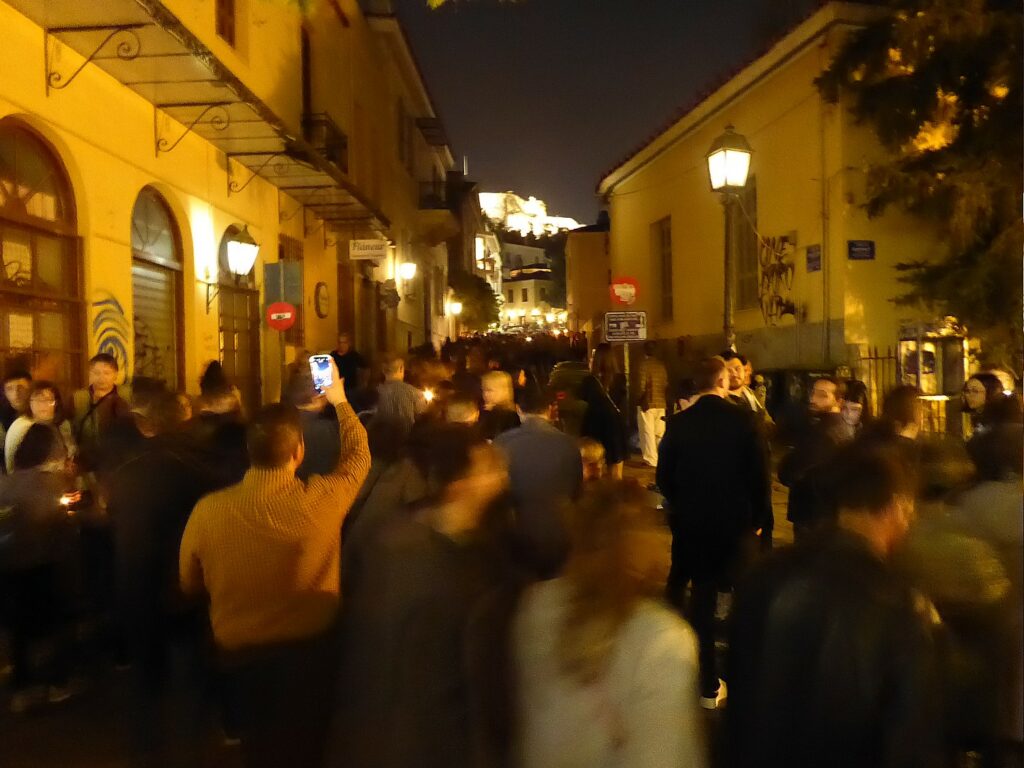
The next day, I immerse myself in Athens (some of the scavenges lead teams out to the Peloponnese and the Theater of Epidaurus which I visited on a boat/bike tour some years ago, and to accomplish them in the brief timeframe, rent a car).I just want to soak in Athens. I have a list of four major places to visit, starting with the Acropolis, then the historic Agora, the flea market at Monasteraki (originally the Jewish quarter), and the National Archeological Museum.
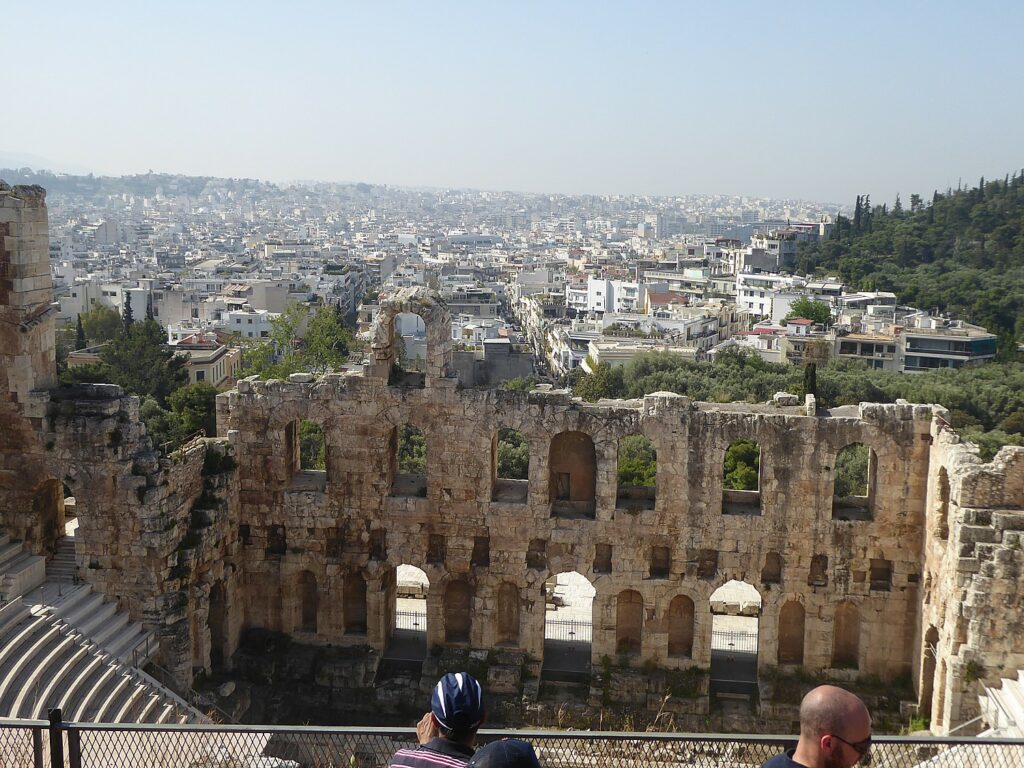
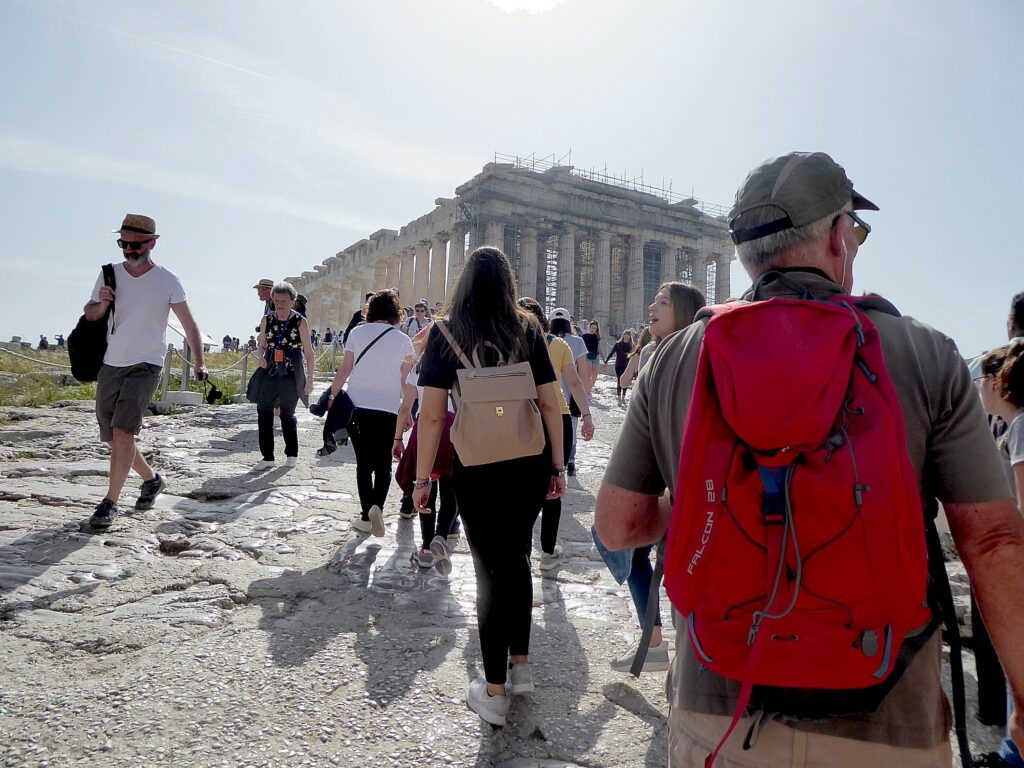
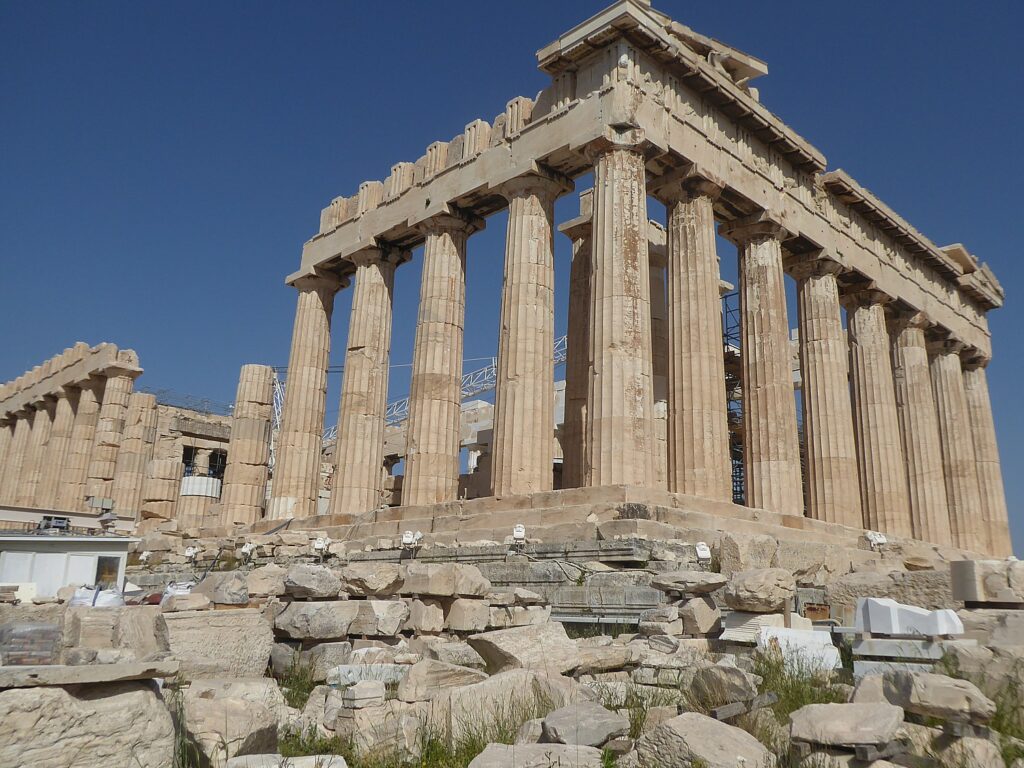
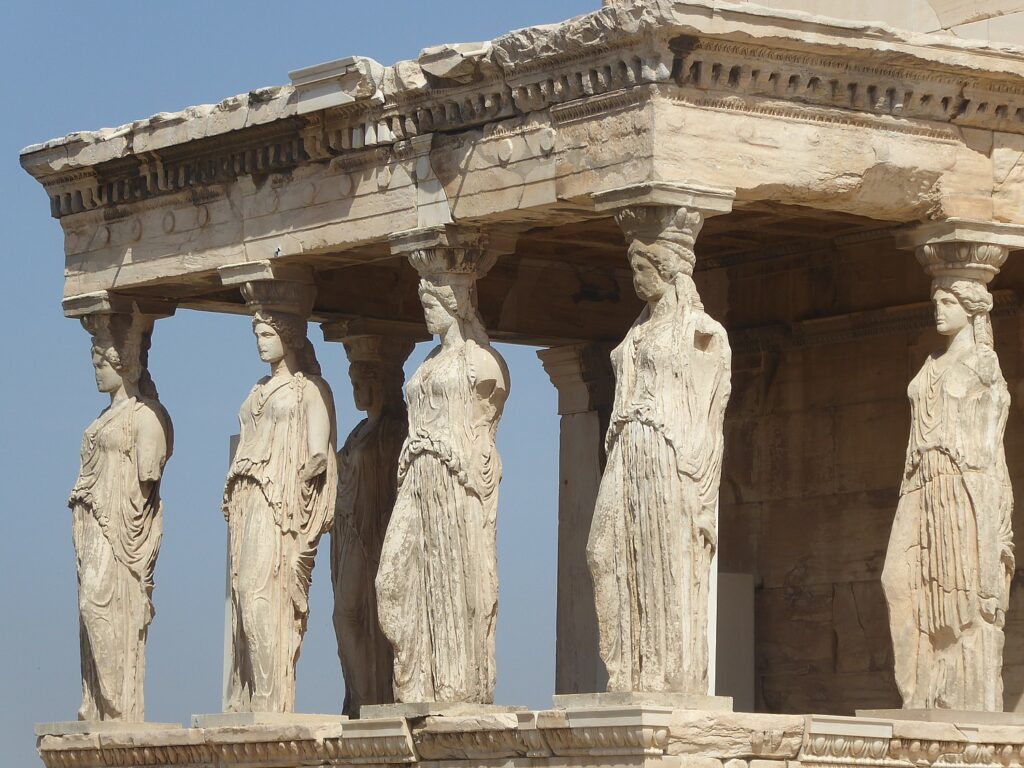
I walk from the Grand Hyatt to the Acropolis. I don’t have the luxury this time of organizing my visit for the end of the day when the sunlight is golden and the crowds are less, so fold myself into the crush of people, satisfied that so many appreciate history and heritage.
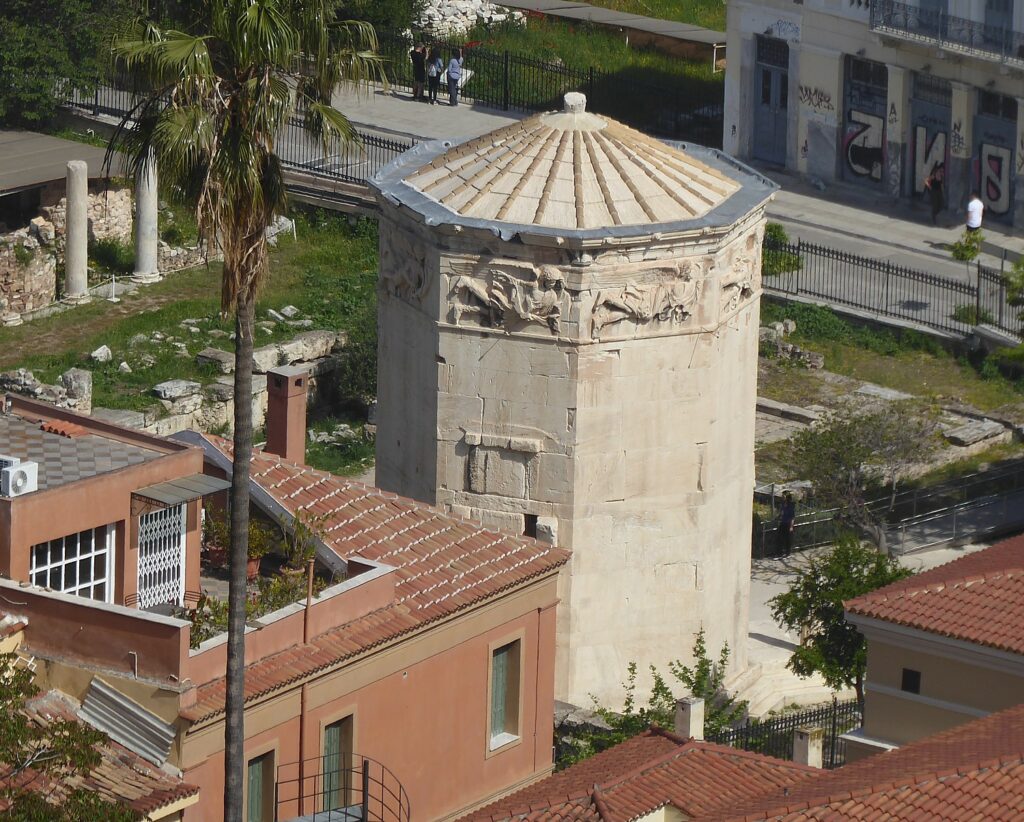
You can see the historic Agora from the Acropolis that commands Athens’ hilltop, and I walk down the stone promenade.
The historic Agora is one of the most fascinating archaeological sites and museums anywhere and tremendously exciting to “discover” as you walk through the paths lined with colonnades, statues, and come upon the ruins. Here you see the ruins of what is in essence the “downtown” and Main Street of ancient Athens. The Agora was the political center for Athens, and because it was a gathering place, also became a commercial center. Courts were held (though capital crimes were tried outside its boundary, so the blood on a murderers’ hands not pollute the public space).
Arrayed are the important institutions including what might be called the first “parliament,” the Bouleuterion, where those participating in the Assembly of the Five Hundred sat. I actually find it more intriguing and interesting to explore than the Acropolis. Here in this one site, is the essence of the Greek Republic that birthed democracy.
Walk down the boulevard lined with statues of Giants (in Greek tradition, Titans were first, then the Giants, then the Olympian gods), to a headless torso of the Roman Emperor Hadrian, who respected and admired Athenian culture and enhanced it with his Library and other institutions, but threw Christians to the lions (and wasn’t so great for Jews, either).
The homage Athenians paid to him is indicated by the decoration on his breastplate depicting the goddess Athena standing on a wolf suckling the twins, Romulus and Remus, the mythical founders of Rome. But the headless statue was contemptuously thrown into the sewage ditch by early Christians (who also defiled the Parthenon and most of the statues denoting devotion to paganism), and only discovered in the sewer when they excavated. The Hadrian Statue stands near the Bouleuterion, or Council House, where the 500 representatives of the 10 tribes met, would have been – in essence, the first House of Parliament.
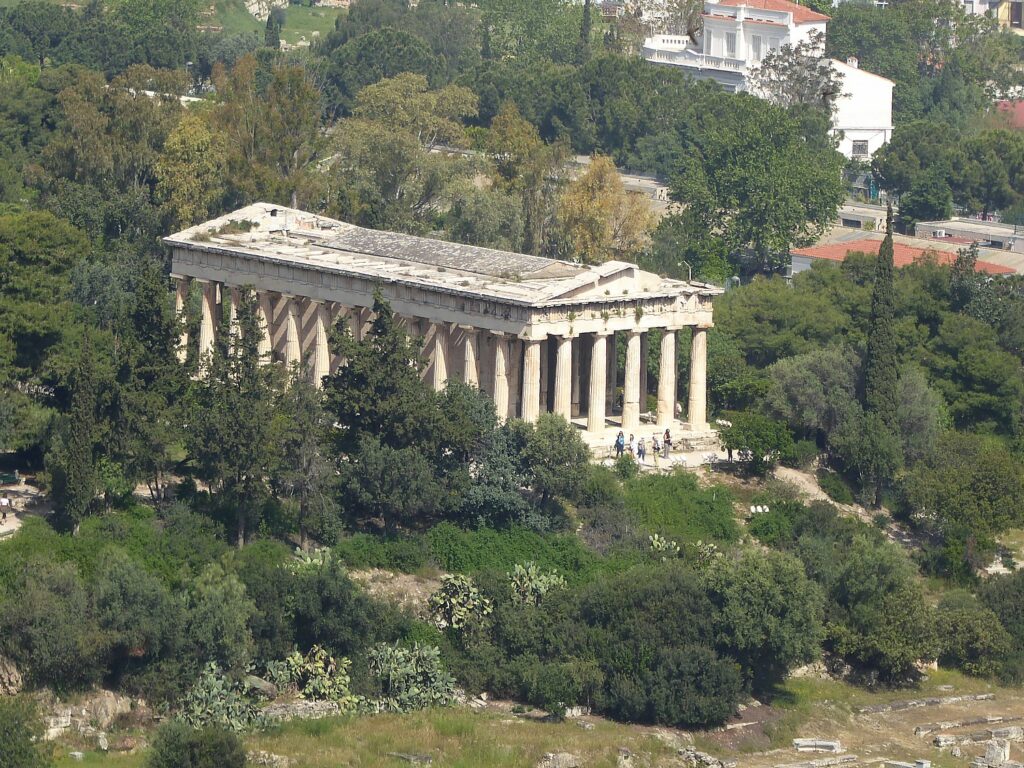
Above, on a hillside, is the beautiful Temple of Hephaistos (5th C BC) but just to the side is believed to have been a synagogue, serving a Jewish community that had existed in Athens at least since 3rd C BC and possibly as early as 6th C BC. This is based on finding etched marble – in essence, a sign for the synagogue, which comes from the Greek words “synagein,” which means “to bring together” and the same root word as “agora” which means “a place of assembly.” (I learned this on my previous trip, during a Context walking tour, which then led me to The Jewish Museum of Greece, where you learn about Europe’s oldest Jewish settlement, 39 Nikis St., 105 57 Athens, Greece, info@jewishmuseum.gr, www.jewishmuseum.gr).
You should allocate at least an hour or two at the Ancient Agora in order to have time to visit a superb museum, housed in the reconstructed Stoa of Attalos, a 2nd C BC building that was restored in1952-56 by the American School of Classical Studies to exhibit the artifacts collected at the site.
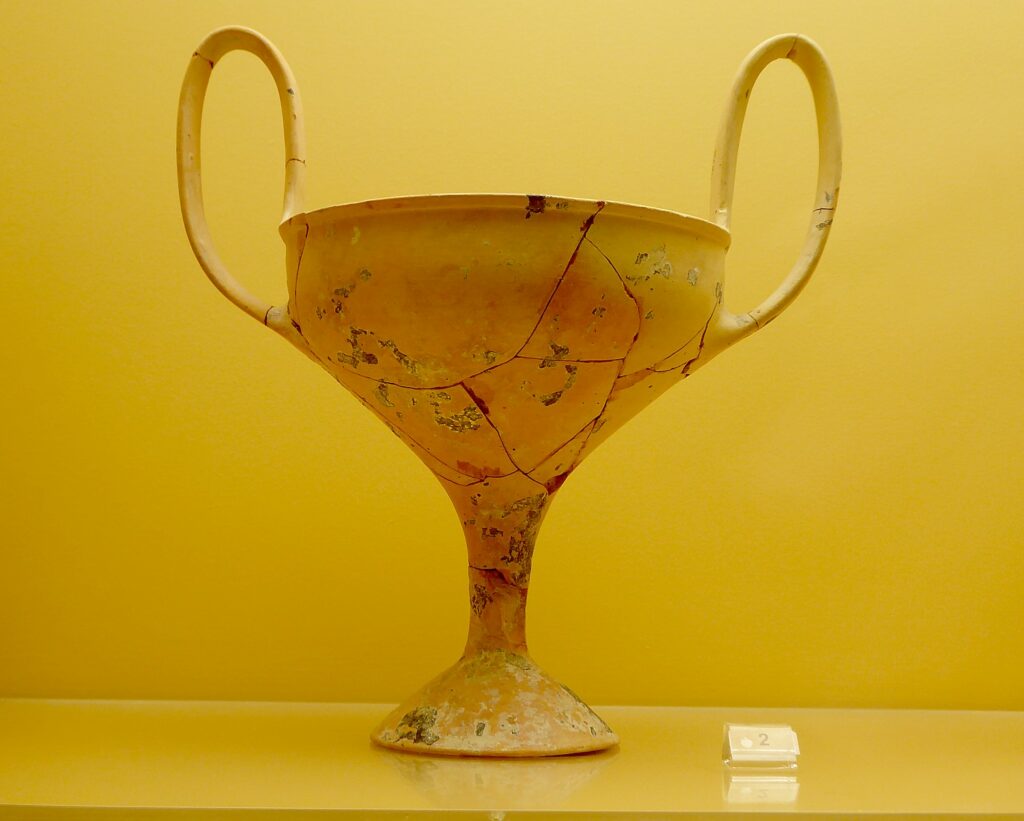
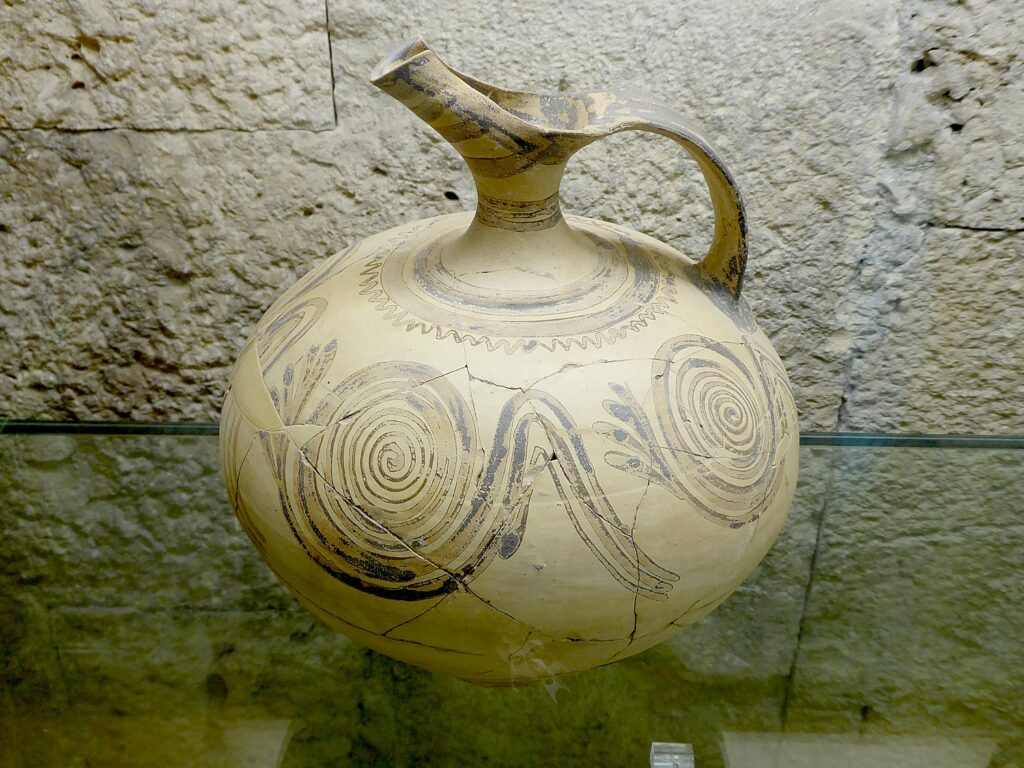
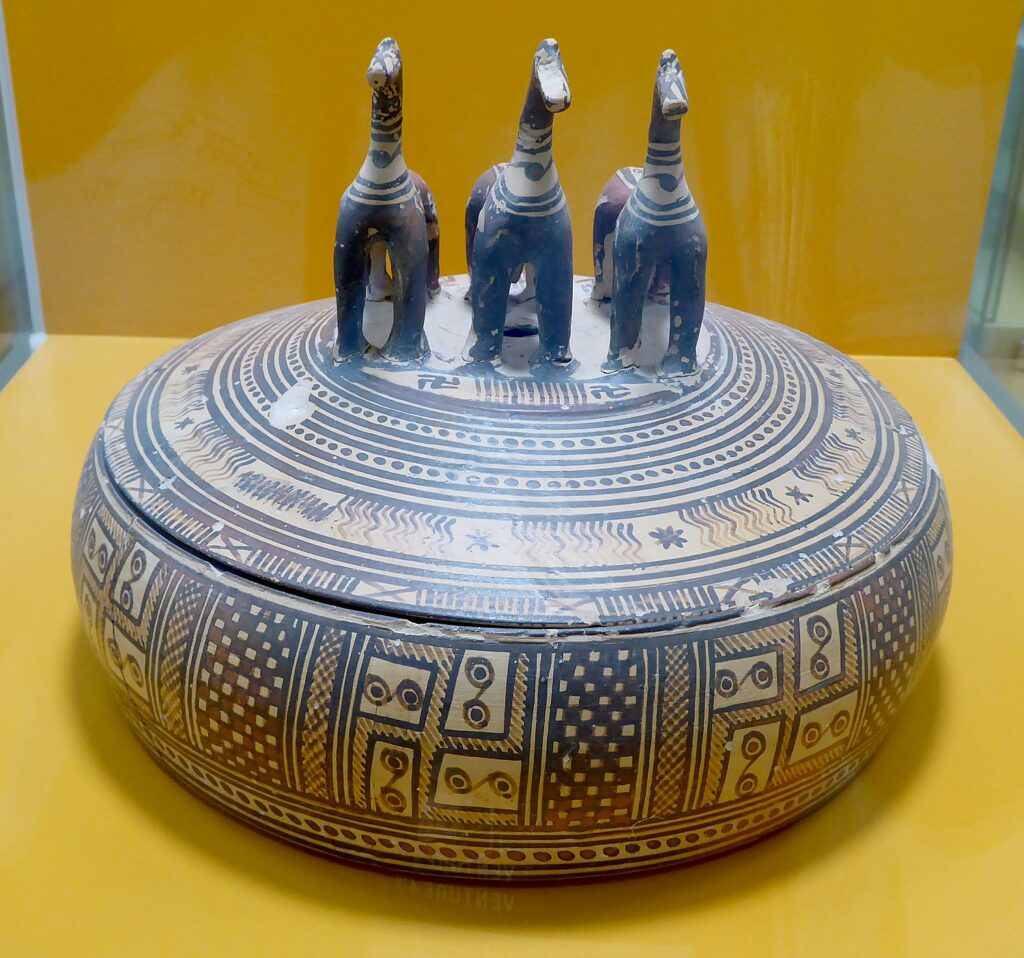
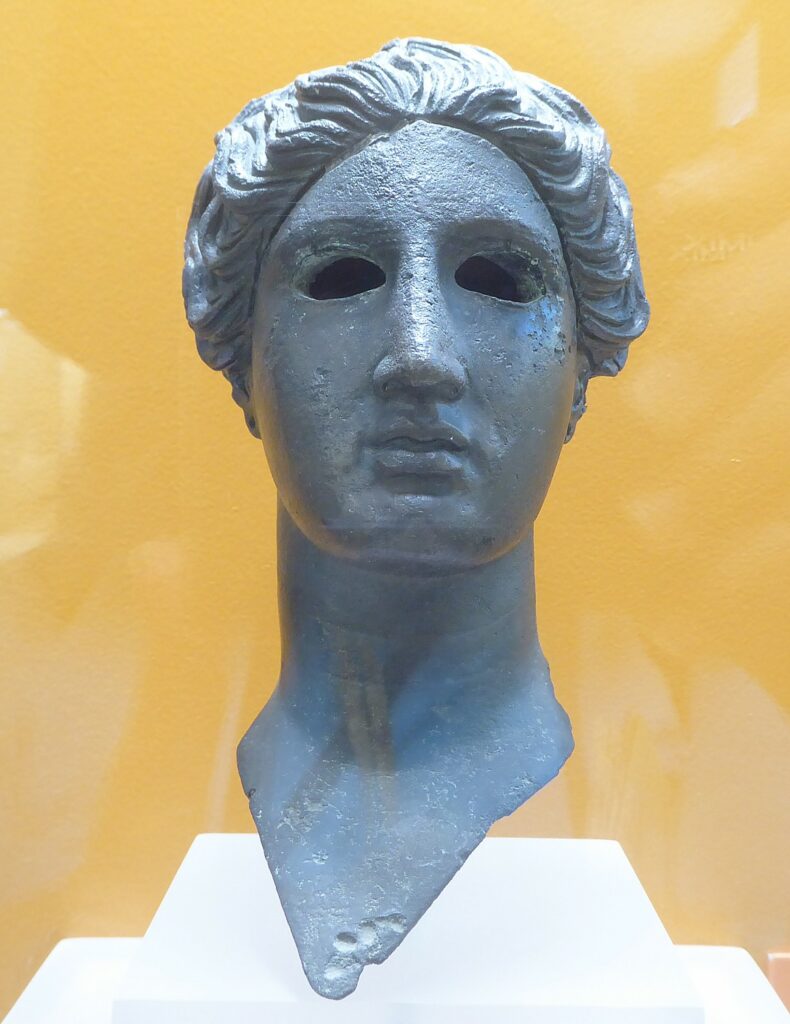
Artifacts on display show how citizens (a minimum of 6000 were necessary) could vote to “ostracize” a politician accused of corruption. You also see the lottery system used to pick jurors (they paid 1/3 drachma to buy a strip in which to write their names, and if selected, would receive a drachma pay), and the devices used to record their verdict. There is an intriguing collection of small cups that were used by prisoners sentenced to death to take hemlock, considered a more merciful end; one of these cups could well have been used by Socrates, who was sentenced to death for teaching the heresy of denying 12 gods at a time when paganism was the official religion (he supported the idea of a single spirit, which makes me think he might have been influenced by the Jewish community that was already established in Athens).

(Combination tickets are available that provide access to the Acropolis, Acropolis Museum, Ancient Angora and several other important sites.)
National Archaeological Museum
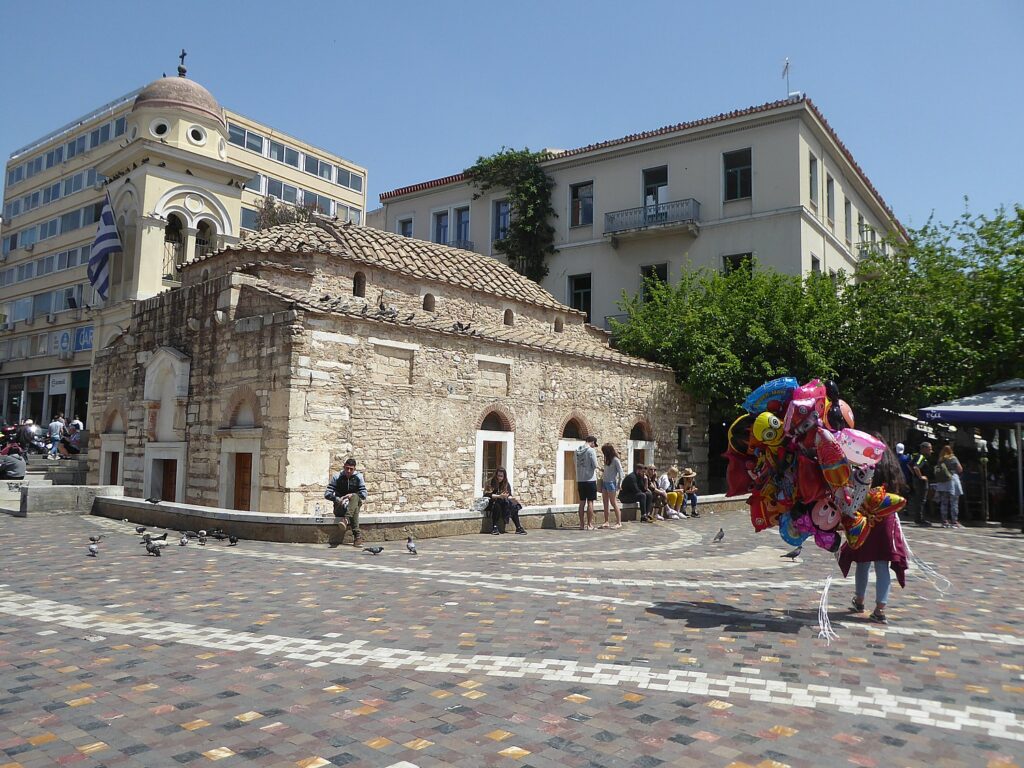
I walk through the flea market at Monasteraki, which, interestingly like the market next to the synagogue in Yangon, Myanmar, was originally Athens’ Jewish Quarter, and through neighborhoods and shopping districts to reach the National Archaeological Museum. The museum (which closes early at 4 pm because of Easter Saturday, forcing me to rush through) has the most magnificent collection of gold from Mycenae; statues, bronzes. I also come upon a special exhibit examining the concept of “Beauty.”
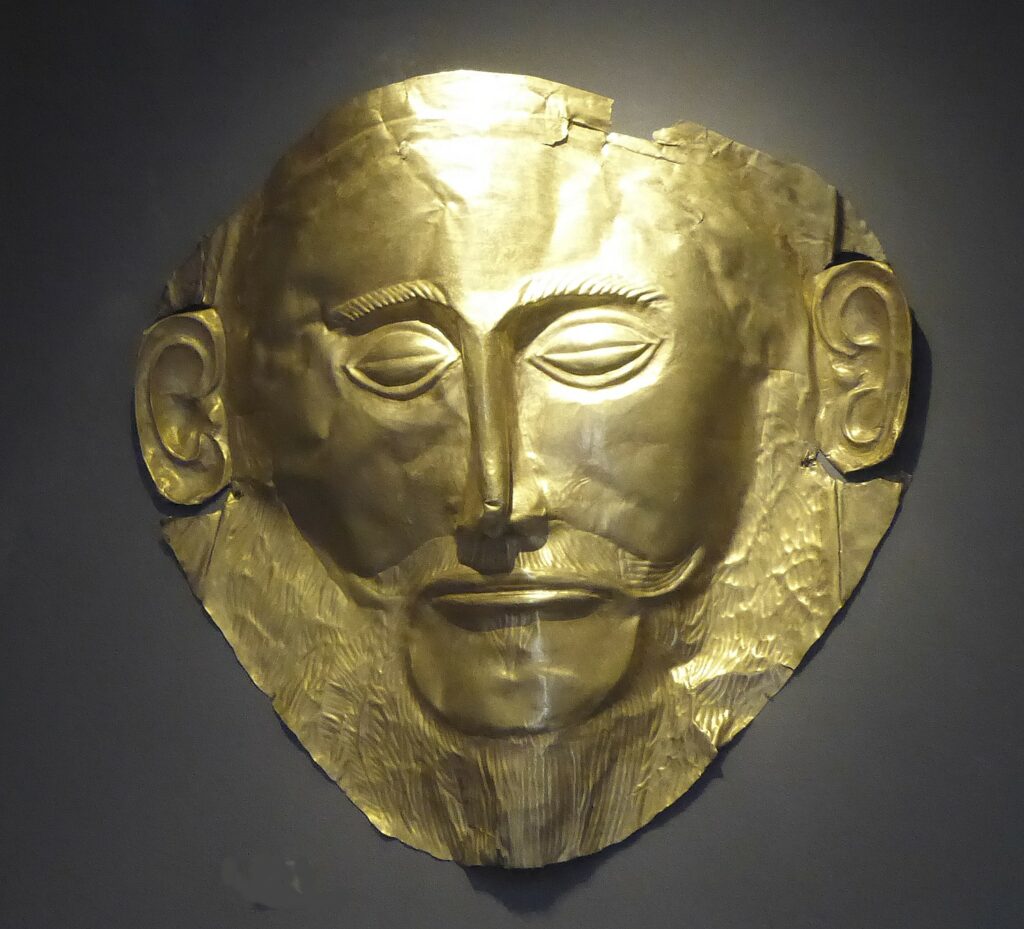
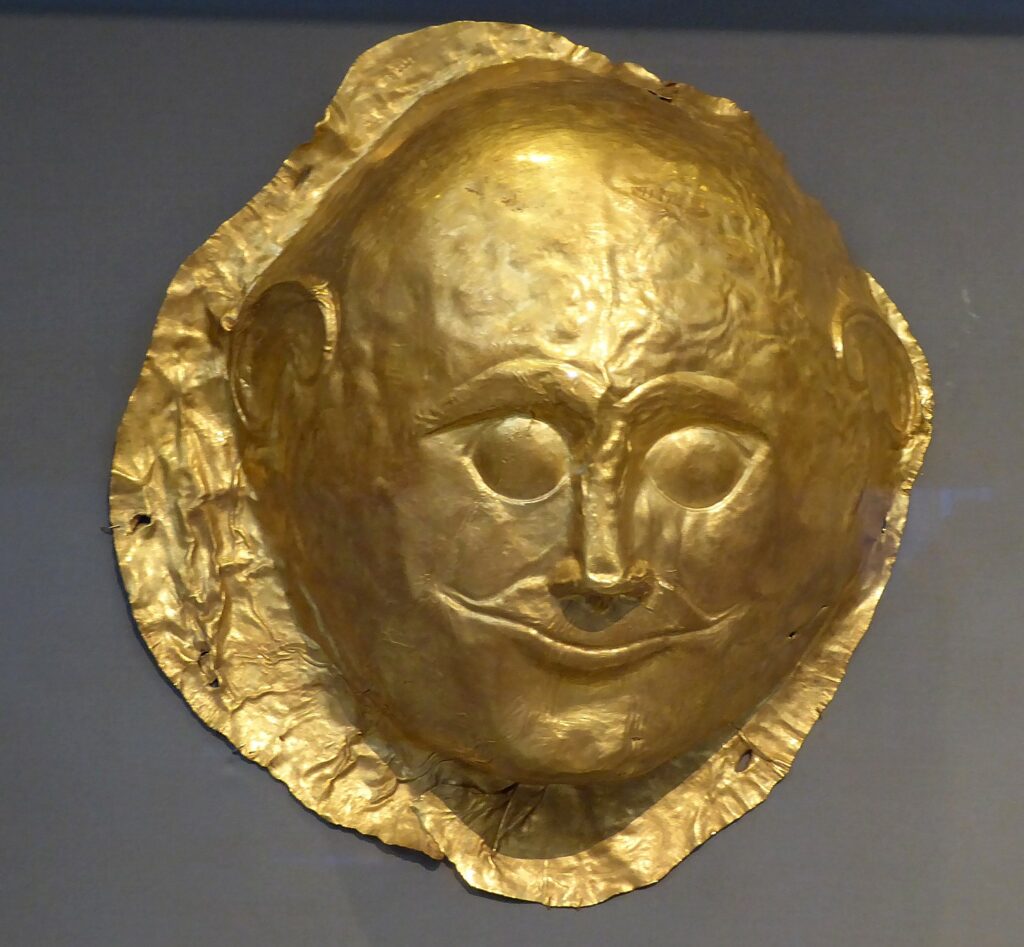
You see the Golden Mask of King Agamemnon, excavated by Heinrich Schliemann at Mycenae in 1876 (which I learned from my last visit’s tour with a docent is actually centuries older than Agamemnon’s reign, but they keep the name for “marketing” purposes), and spectacular gold ornaments and funeral objects that suggest a belief in an afterlife.
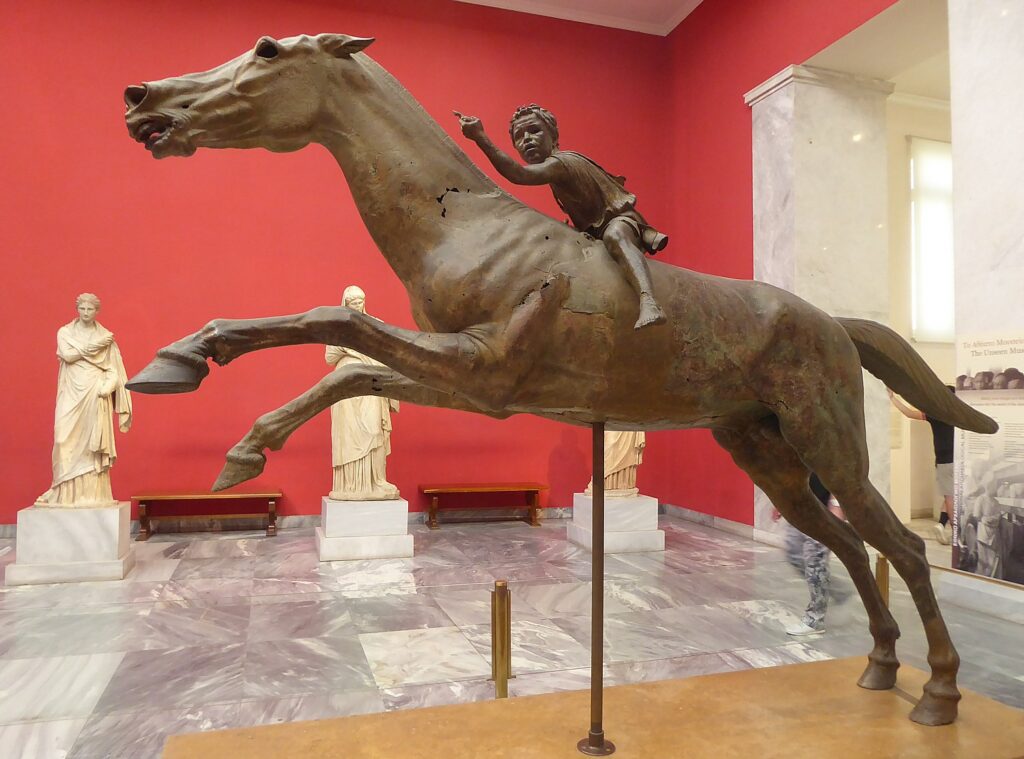
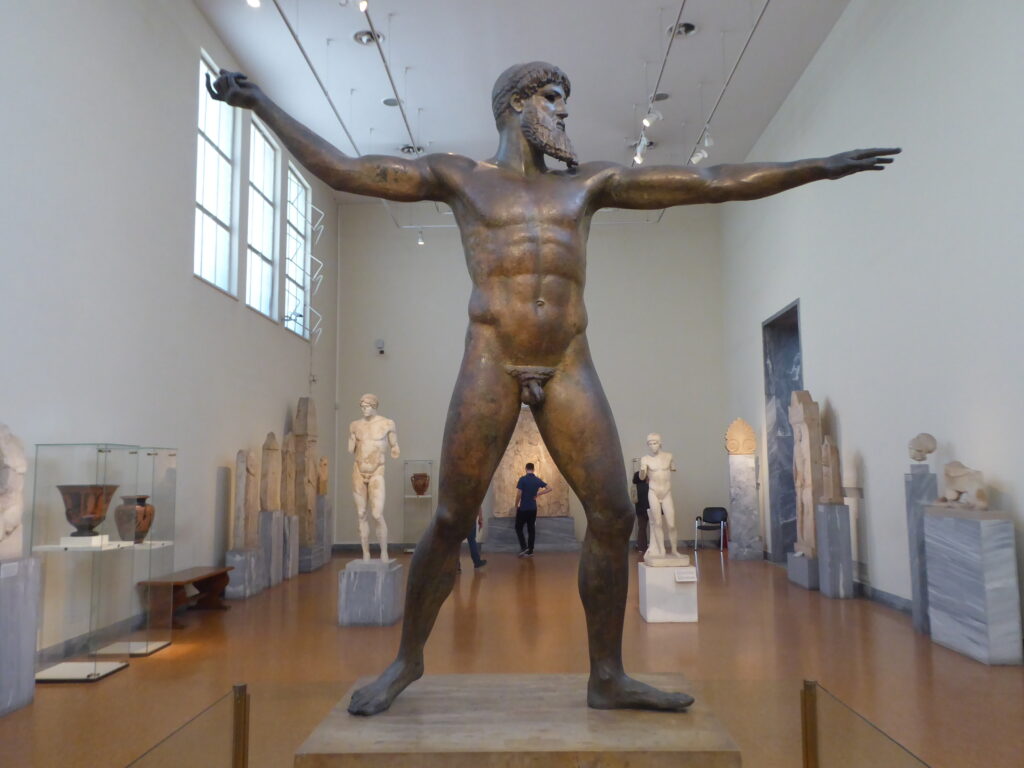
There are two of only five full-scale bronzes left in the world: one, a national symbol of a standing god (Zeus or Poseidon, it isn’t clear because the tool he would have held, a lightning bolt or a trident, has been lost) was saved because the boat sank that was carrying it to Rome to be melted down for weapons, and was found in 1926 by fisherman; the other is a magnificent bronze statue, 1000 years old, of an African boy on a racing horse made during the time of Alexander the Great, when the expansion of Greek’s empire brought exotic themes into the art, that was saved by being shipwrecked – it is so graceful, so elegant, so charged with energy, it looks like it could run away.
There is also a vase with the first sentence (or rather, the oldest known sentence) written in Greek language: “Now I belong to the man who is the best dancer.” (I think to myself, what pressure on a person to write the first sentence to go down in history! Or, for that matter, the inventor of the “space” between words, which had not existed in Greek.).
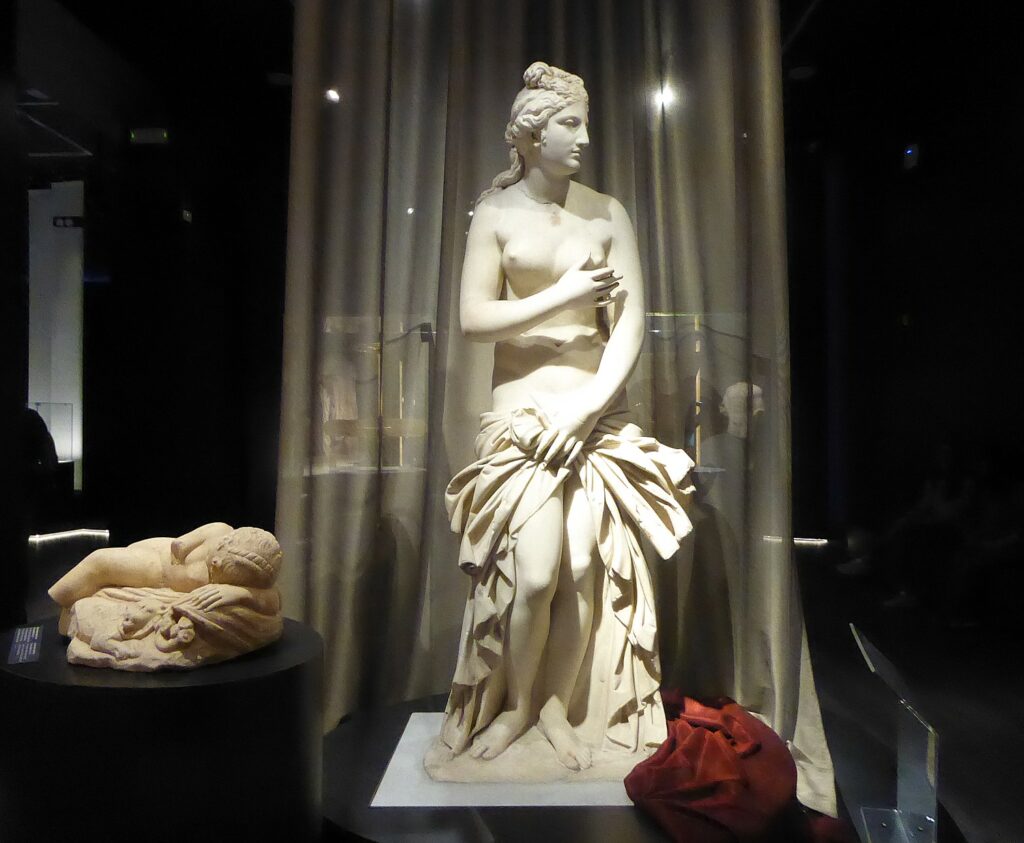
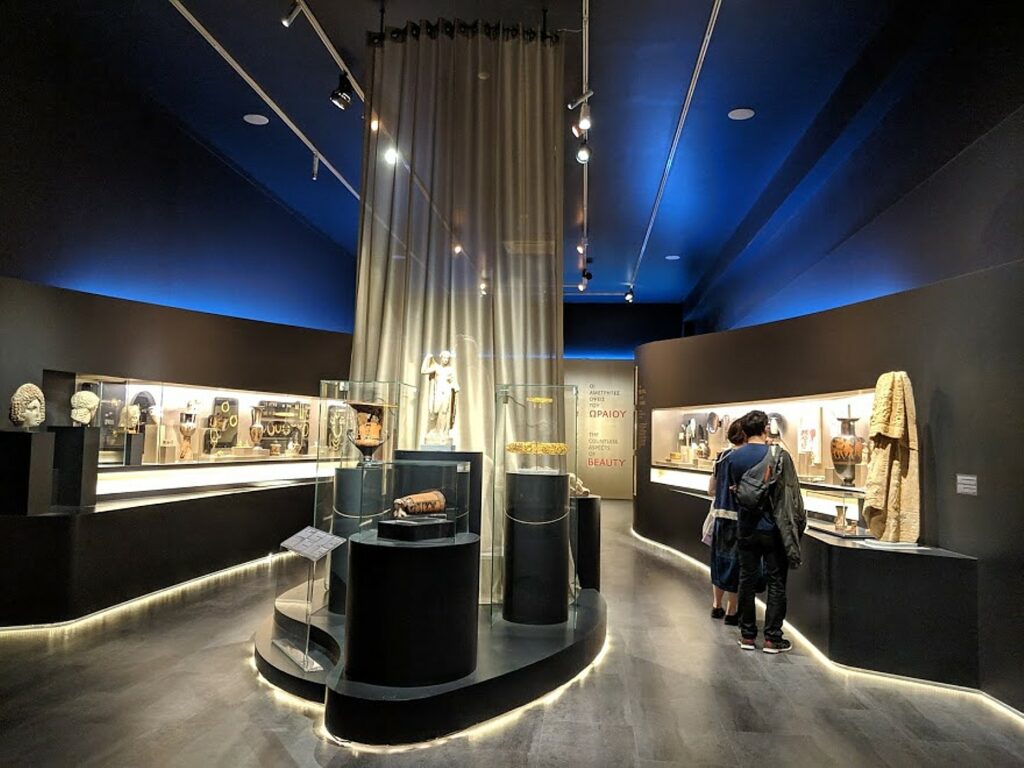

I stay in the museum until they literally kick me out, fascinated to read the descriptions, which I find enlightening and surprisingly current, with lessons for today in the interplay between trade, migration, innovation, science and social and political movements:
“In the 6th C BC, the Greeks dominated the Mediterranean and the Black Sea….The impressive dispersion of the Greeks and the founding of new Greek colonies and trading posts were the result of long processes of migration…
“The nature of the economy underwent a radical change as a result of the growth of trade. A new class of citizens emerged who were conscious of liberty and its potential and now demanded the right to play an active role in the running of public affairs. The 6th C BC saw the consolidation, after major social upheavals and political changes, of the distinct personality of the Greek city-state. Intense social disturbances set most of the cities on the road to democratic constitutions, making an important stop along the way at the institution of the tyranny.
“The liberty that was characteristic of the Greek way of life and which governed their thinking finds eloquent expression in their artistic creations…Works of art and artists moved freely along the trade routes. The wealth and power of the city-states were expressed in the erection of monumental, lavishly adorned temples and impressive public welfare works.
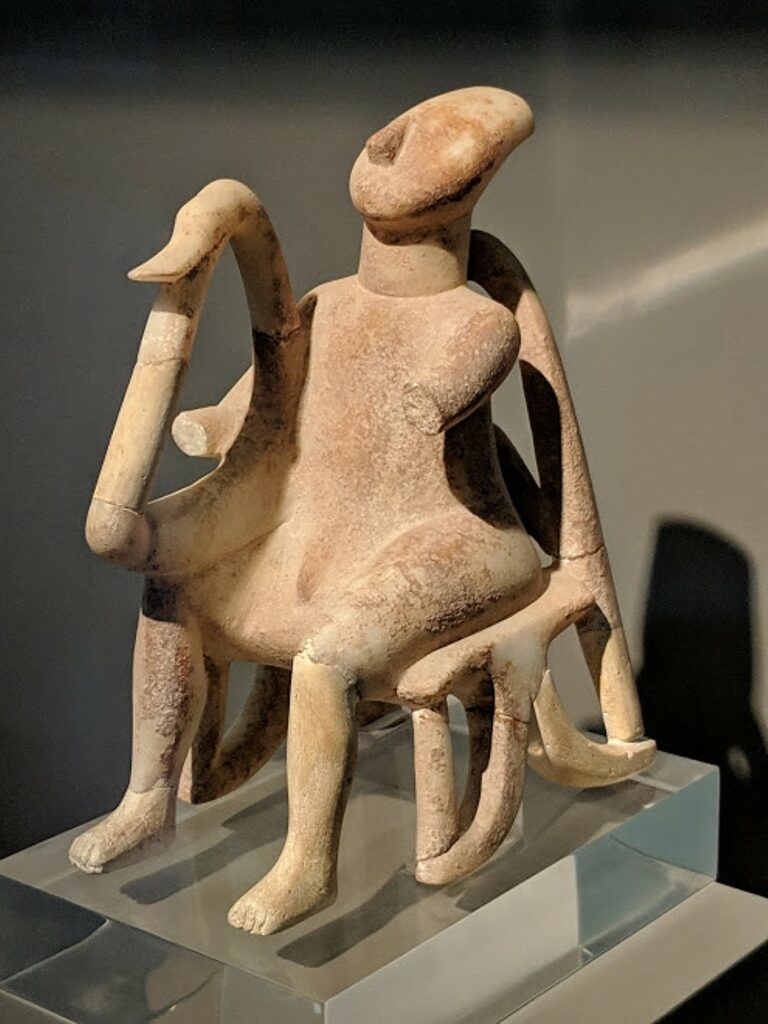

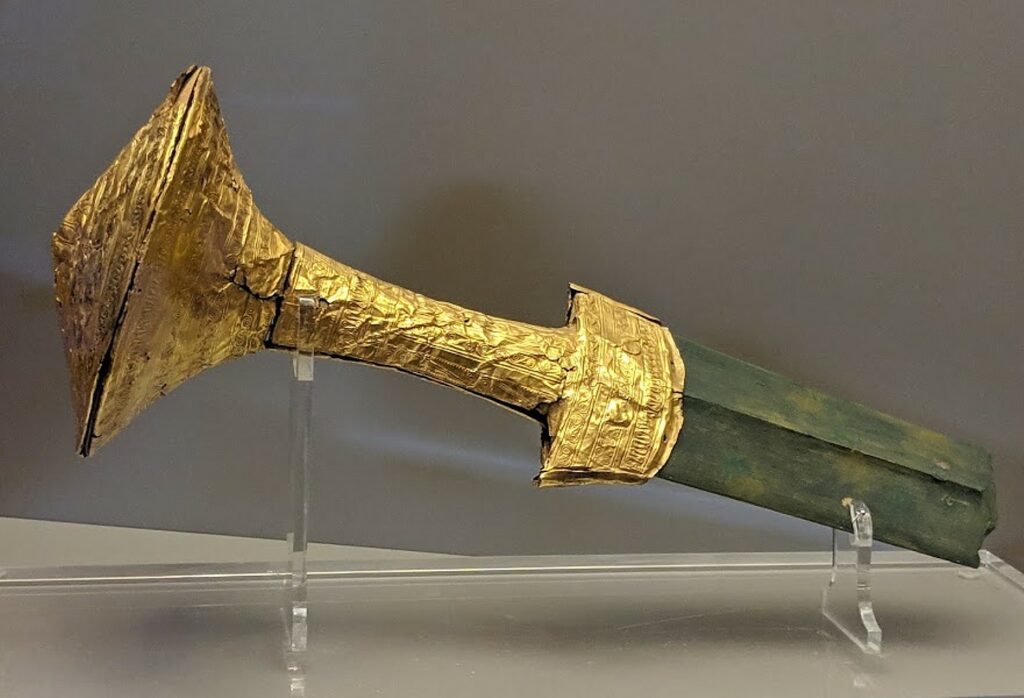
“Greeks turned their attention to the natural world and to phenomena that gave rise to philosophical speculation, formulative ideas such as those of matter, the atom, force, space and time, and laying the foundations of science. Flourishing Ionia was the region in which philosophy and science first evolved. By the end of the century, the thriving Greek cities of Southern Italy and Sicily, known as Magna Graecia, were sharing in these astounding intellectual achievements. At the same time, the first prose works were written, taking the form of local histories or geographies containing an abundance of mythological elements and continuing the brilliant tradition of 7th century poetry.”
(Because of the Easter holiday, and our limited time, and the fact that I have visited twice before, I miss an otherwise not-to-be-missed Athens attraction, the New Acropolis Museum.)
The walk through Athens is fabulous, taking me through neighborhoods, and I get to see Athens’ gallery of street art, with its political and social tinge. Indeed, taking photos of at least five street art murals is one of the scavenges (you have to explain where you found them, 25 points).

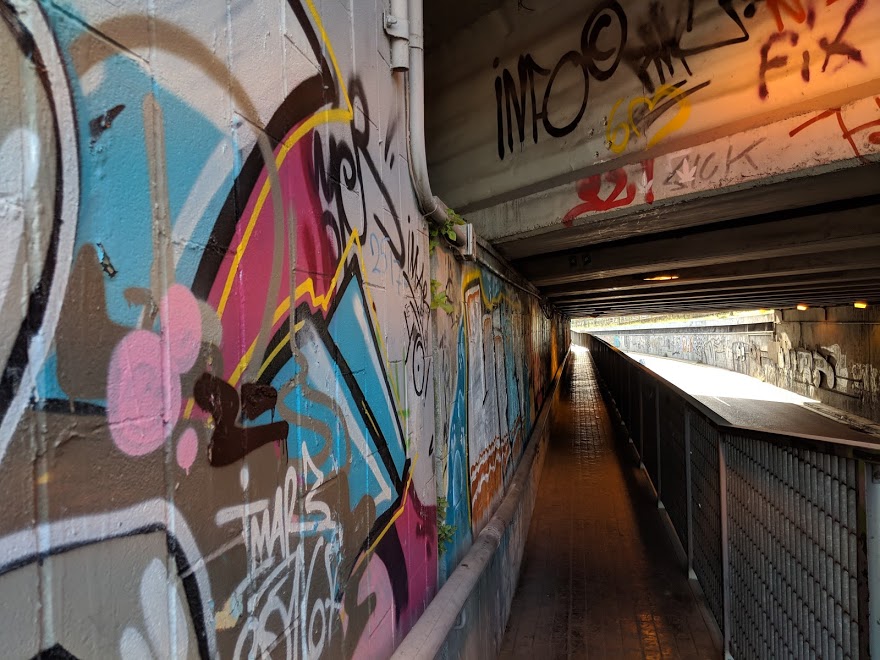

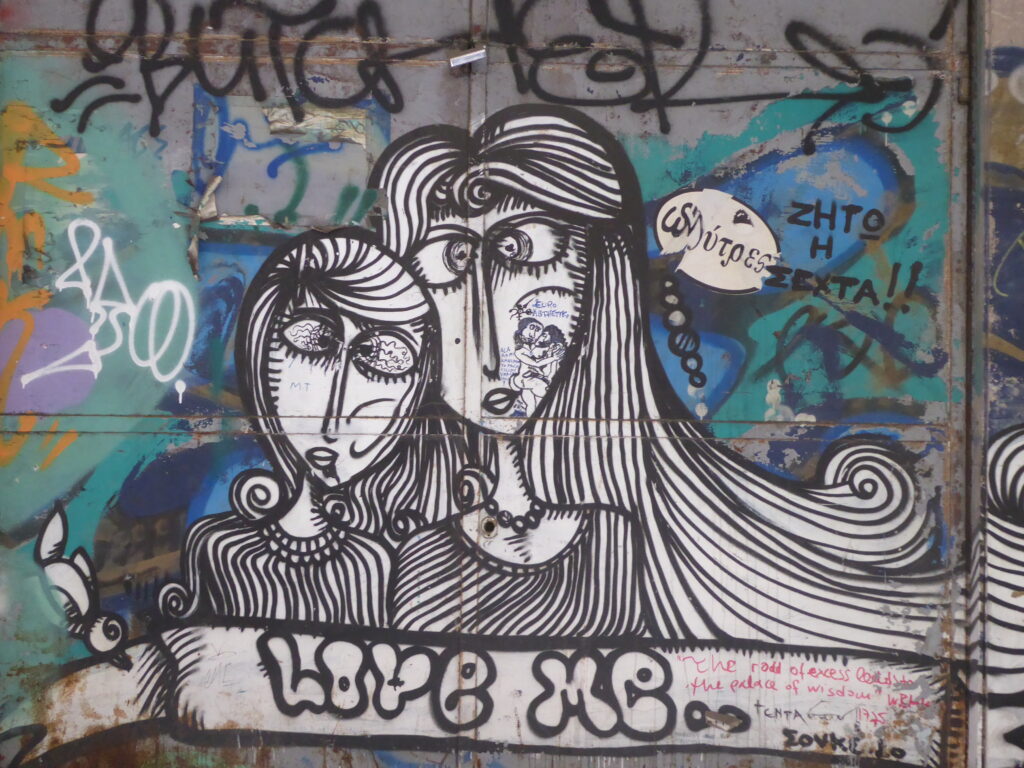

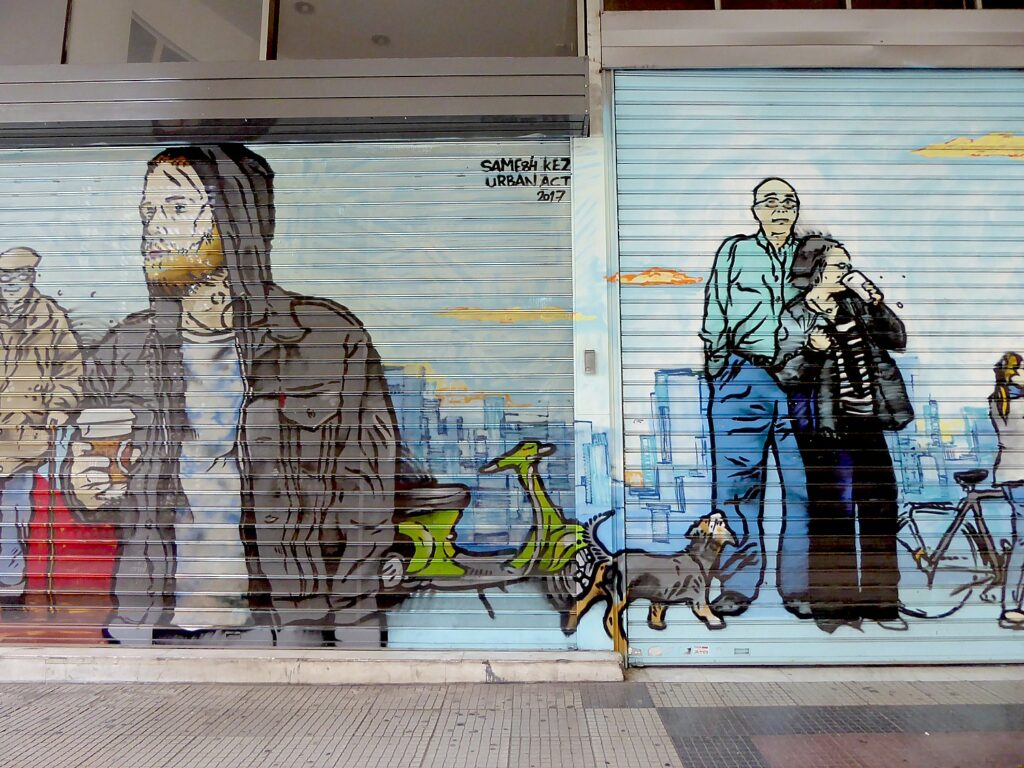
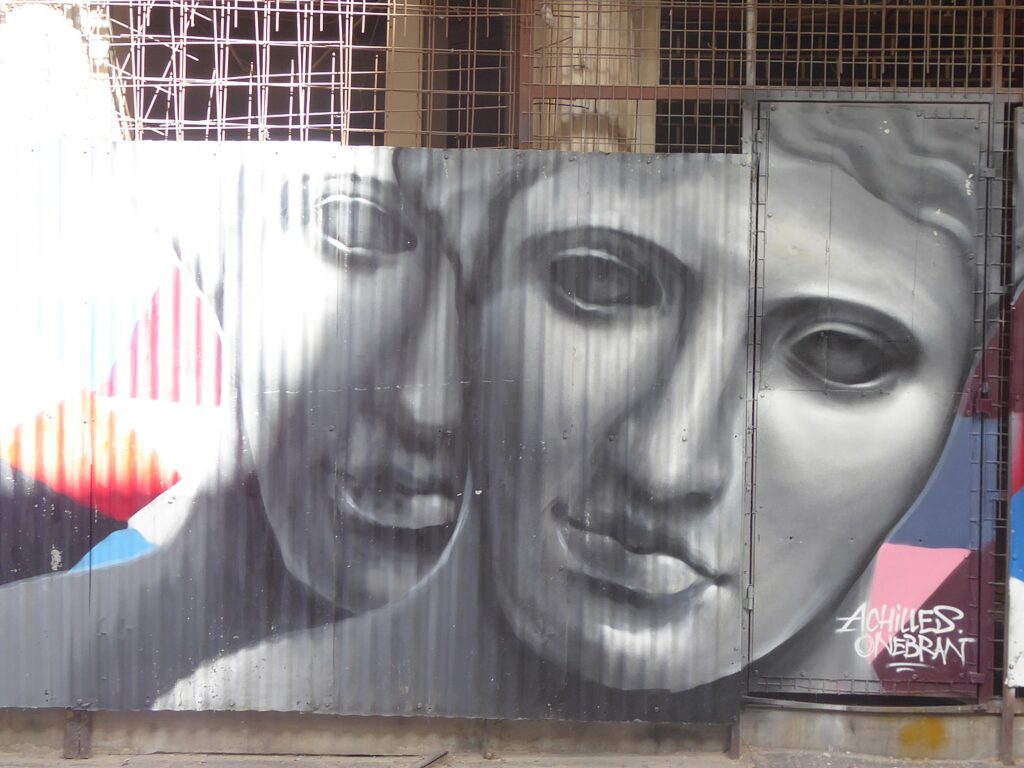
Walking back through the Plaka, I bump into Bill Chalmers, the ringmaster of our 23-day Global Scavenger Hunt, Pamela and their son Luka – it turns out to be a team challenge to photograph them (whichever team sends in the photo first wins the points).
It’s been a challenge to “see” Athens in just 30-hours, let alone venture out to the Peloponnese. But our quick visits, one country, one culture, after the next, paints the rarest of pictures of our common humanity in our mind’s eye. We are becoming global citizens.
Chalmers helps us along with the design of his scavenges, and in each location, he provides language sampler (for Athens, he offers “I am sorry”, “what is your name,” “Can you speak more slowly,” as well as icebreakers to start conversations with a local, and questions to ponder.
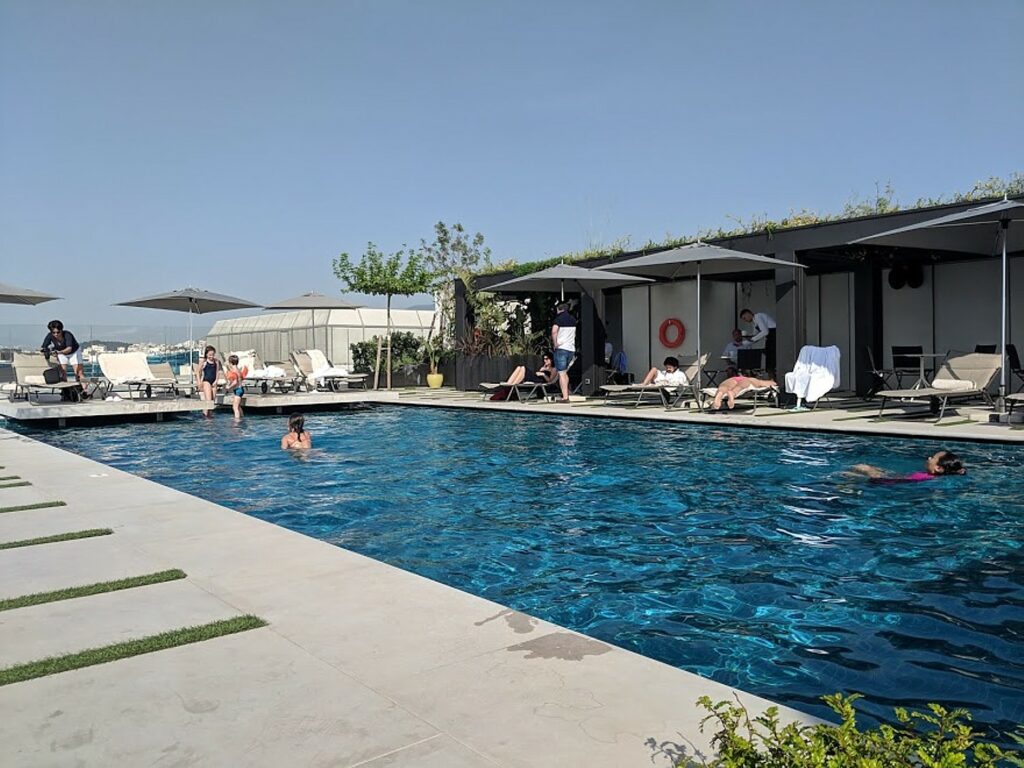
I walk back to the hotel to meet several of us who are sharing a van to get back to the airport. Our deadline and meeting place is 8:30 pm at the airport.
Onward to Marrakech, Morocco.
Excellent visitor planning tools of Athens are at www.thisisathens.org. Also, the Athens Visitor Bureau offers a wonderful program that matches visitors with a local Athenian volunteer who goes beyond the traditional guidebook sights to take you to local neighborhoods, http://myathens.thisisathens.org/
The Global Scavenger Hunt is an annual travel program that has been operated for the past 15 years by Bill and Pamela Chalmers, GreatEscape Adventures, 310-281-7809, GlobalScavengerHunt.com.
________
© 2019 Travel Features Syndicate, a division of Workstyles, Inc. All rights reserved. Visit goingplacesfarandnear.com, www.huffingtonpost.com/author/karen-rubin, and travelwritersmagazine.com/TravelFeaturesSyndicate/. Blogging at goingplacesnearandfar.wordpress.com and moralcompasstravel.info. Send comments or questions to FamTravLtr@aol.com. Tweet @TravelFeatures. ‘Like’ us at facebook.com/NewsPhotoFeatures
